
CSA BOX CONTENTS WEEK OF JAN 21ST
01/22/19 — Scott
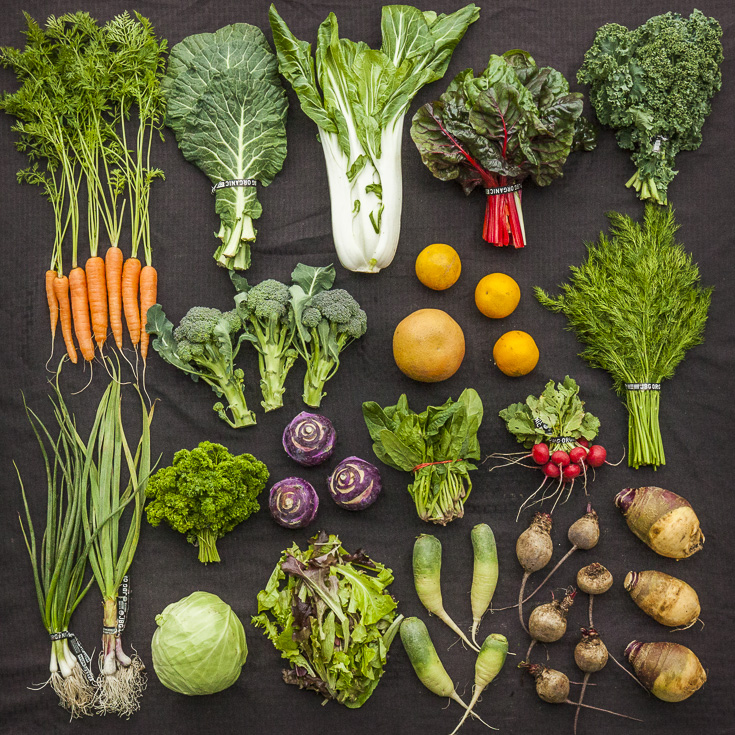 CSA Box Contents Week of Jan 21st
CSA Box Contents Week of Jan 21st
Large Box
Beet, Red
Bok Choy
Broccoli
Cabbage, Red
Carrot, Rainbow
Citrus, Mixed
Greens, Kale, Curly
Greens, Spinach X 2
Herb, Fennel
Onion, Spring White
Radish, Watermelon
Beet, Red
Bok Choy
Broccoli
Cabbage, Red
Carrot, Rainbow
Citrus, Mixed
Greens, Kale, Curly
Greens, Spinach X 2
Herb, Fennel
Onion, Spring White
Radish, Watermelon
Medium Box
Beet, Red
Carrot, Orange
Greens, Collards
Greens, Kale, Dino
Greens, Salad Mix
Greens, Spinach
Herb, Cilantro
Onion, Spring White
Radish, Watermelon
Turnip, Rutabaga
Beet, Red
Carrot, Orange
Greens, Collards
Greens, Kale, Dino
Greens, Salad Mix
Greens, Spinach
Herb, Cilantro
Onion, Spring White
Radish, Watermelon
Turnip, Rutabaga
Small Box
Cabbage, Green
Carrot, Rainbow
Cauliflower, Romanesco
Greens, Collards
Greens, Kale, Dino
Herb, Cilantro
Radish, Watermelon
Cabbage, Green
Carrot, Rainbow
Cauliflower, Romanesco
Greens, Collards
Greens, Kale, Dino
Herb, Cilantro
Radish, Watermelon
Individual Box
Broccoli
Cabbage, Green
Carrot, Orange
Greens, Chard, Rainbow
Onion, Spring White
Radish, Watermelon
Broccoli
Cabbage, Green
Carrot, Orange
Greens, Chard, Rainbow
Onion, Spring White
Radish, Watermelon
WEEK 3 IN PHOTOS
01/18/19 — Heydon Hatcher
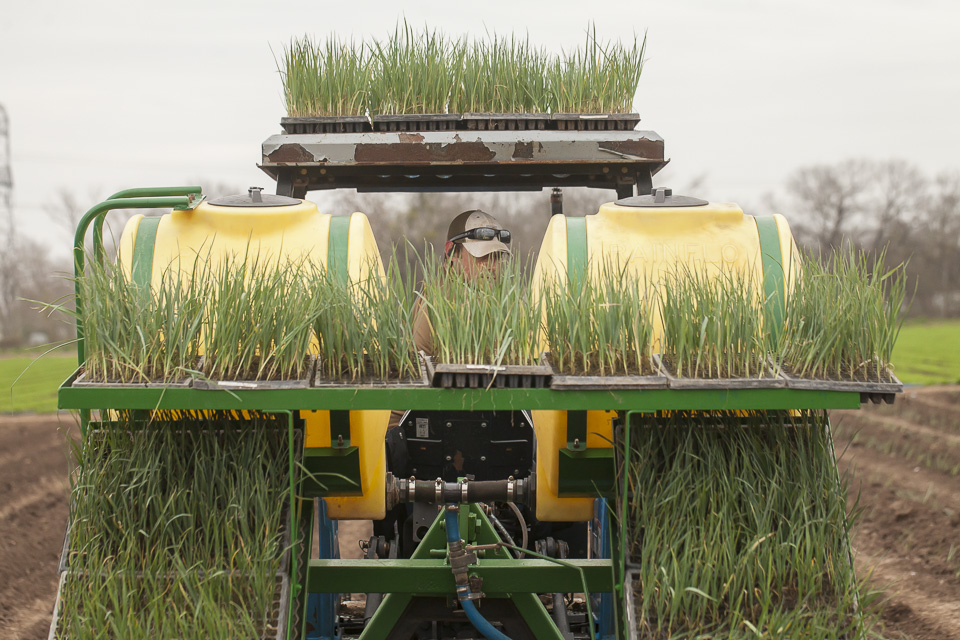 Transplants! Photo by Scott David Gordon.
Transplants! Photo by Scott David Gordon.
The transplant sale dates have been set! Mark your calendars for Saturday, February 23rd; Saturday, March 2nd; and Saturday, March 9th! It's going to be our best yet. This week, we are reeling in crop planning and planting! The mailman delivered tons of seeds from Johnny's Seeds, Seedway, Kitazawa, and Harris Seeds that we are eager to get into the ground.
We are in the final weeks of the CSA New Year Promo. If you sign up for our CSA now, you will receive your first box free! Just type in "VEGGIEHEAVEN" to receive your initial box gratis!
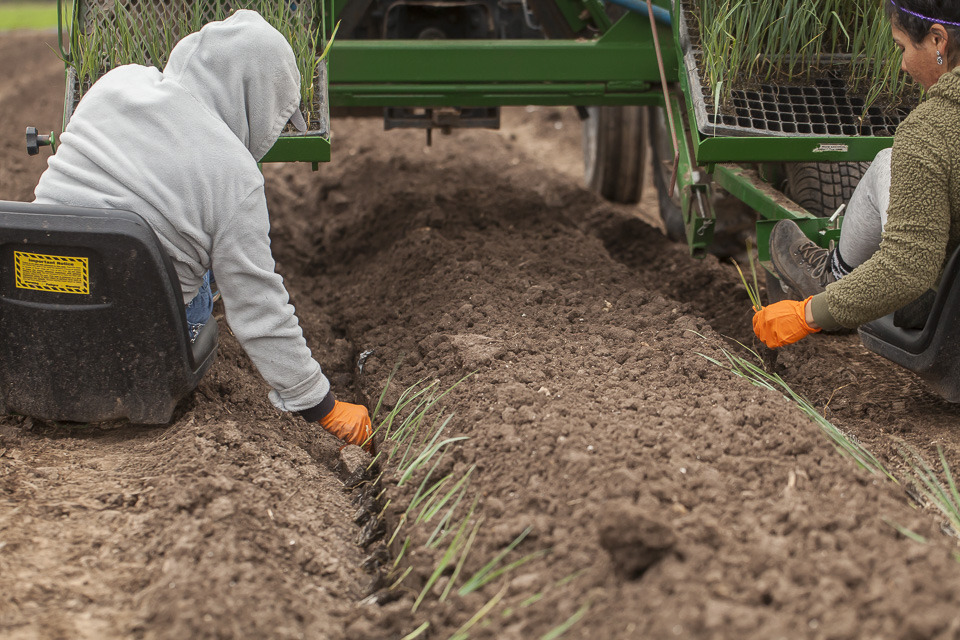 Getting transplants into the ground. Photo by Scott David Gordon.
Getting transplants into the ground. Photo by Scott David Gordon.
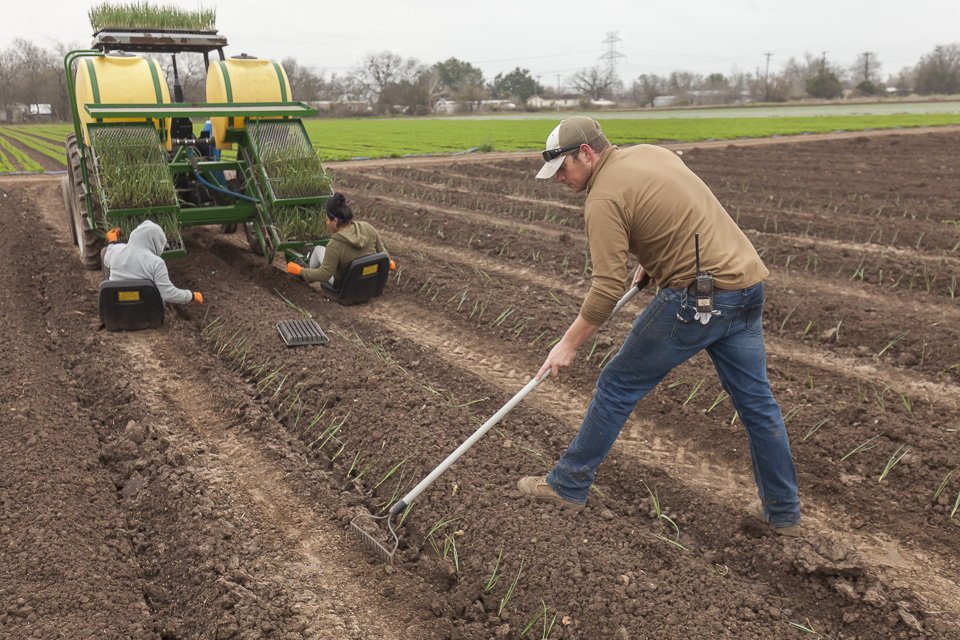 Ensuring the transplants are in! Photo by Scott David Gordon.
Ensuring the transplants are in! Photo by Scott David Gordon.
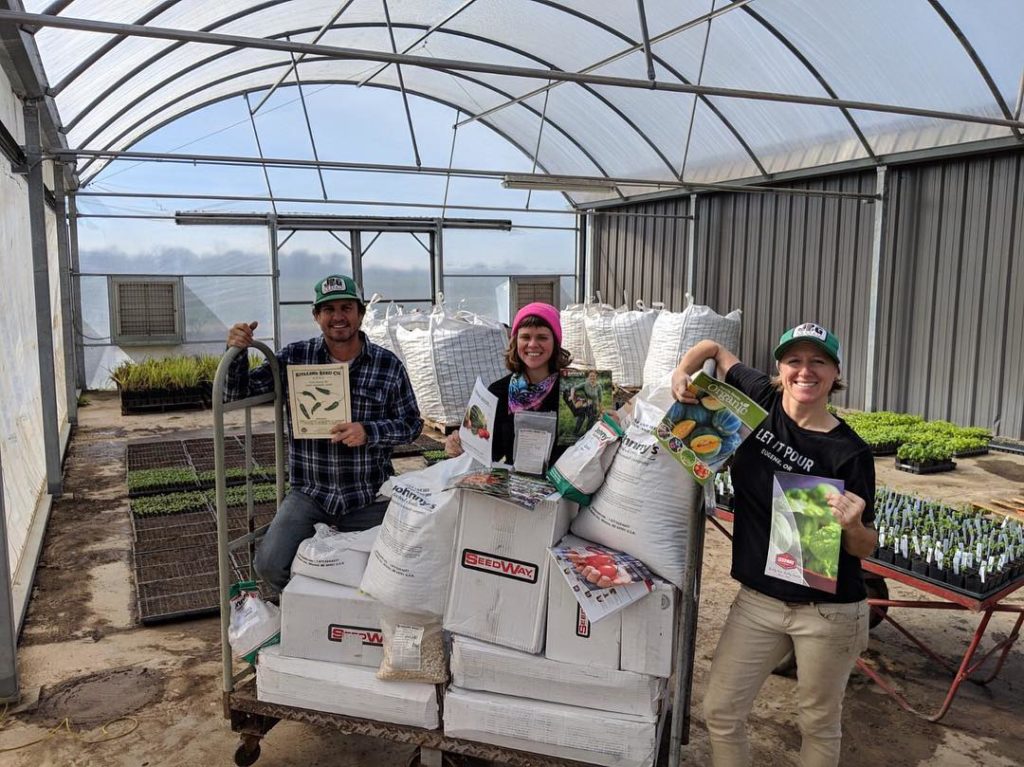 Seeds are in!
Seeds are in!
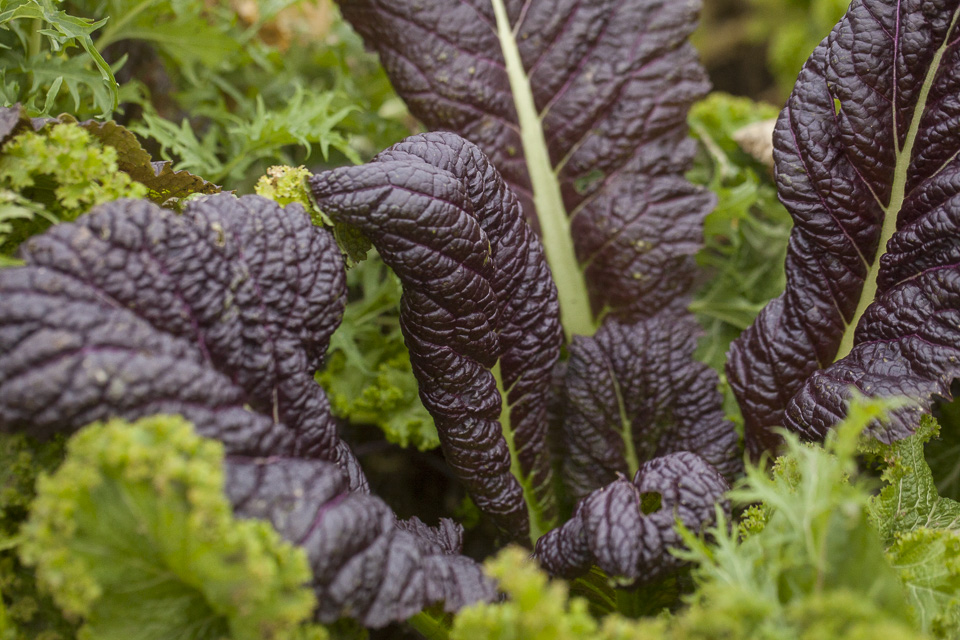 Hues of greens. Photo by Scott David Gordon.
Hues of greens. Photo by Scott David Gordon.
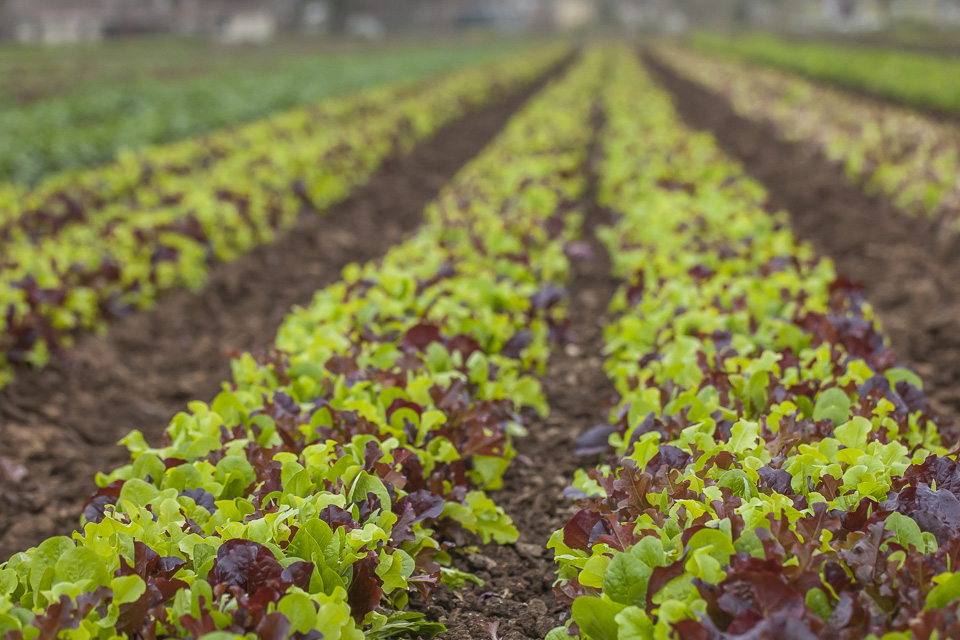 Fields of green. Photo by Scott David Gordon.
Fields of green. Photo by Scott David Gordon.
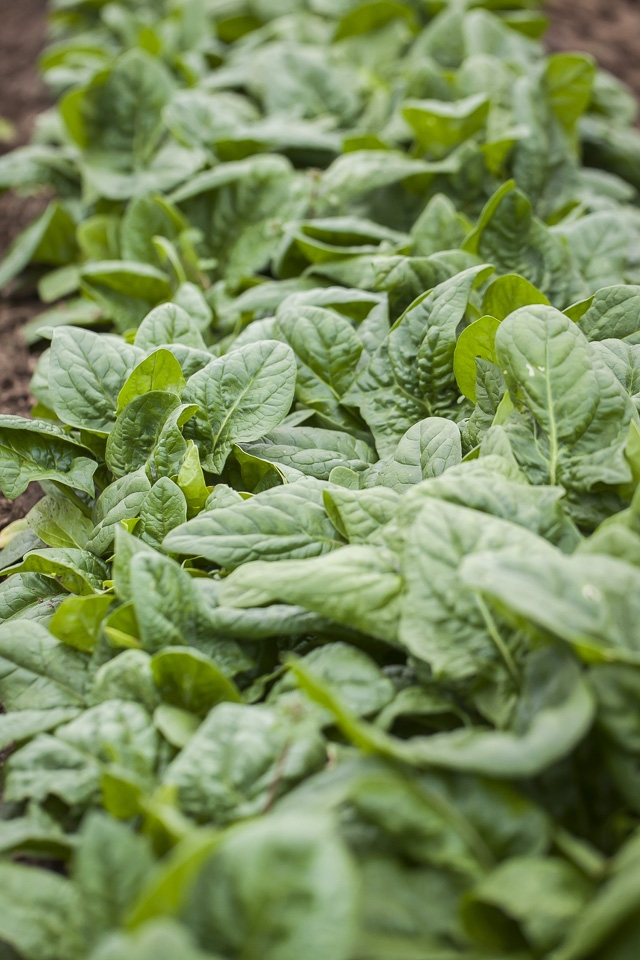 Spinach. Photo by Scott David Gordon.
Spinach. Photo by Scott David Gordon.
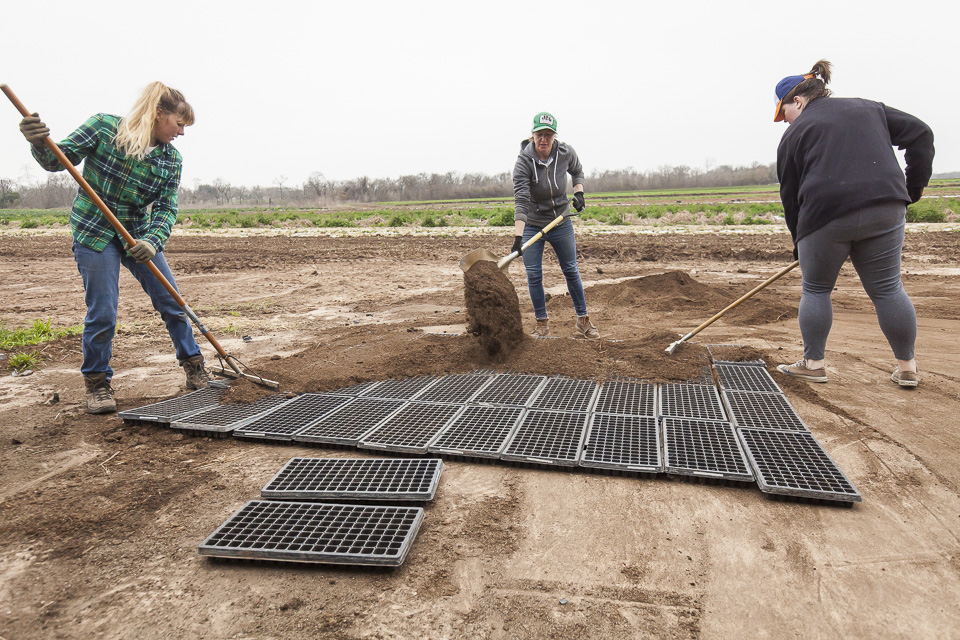 Readying flats for seeds. Photo by Scott David Gordon.
Readying flats for seeds. Photo by Scott David Gordon.
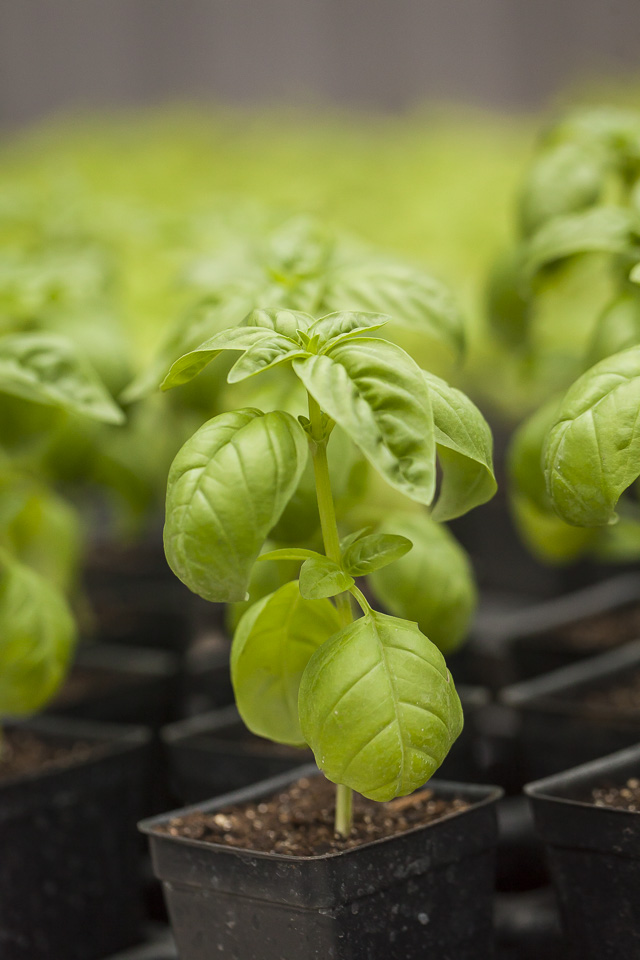 Gorgeous basil transplants. Photo by Scott David Gordon.
Gorgeous basil transplants. Photo by Scott David Gordon.
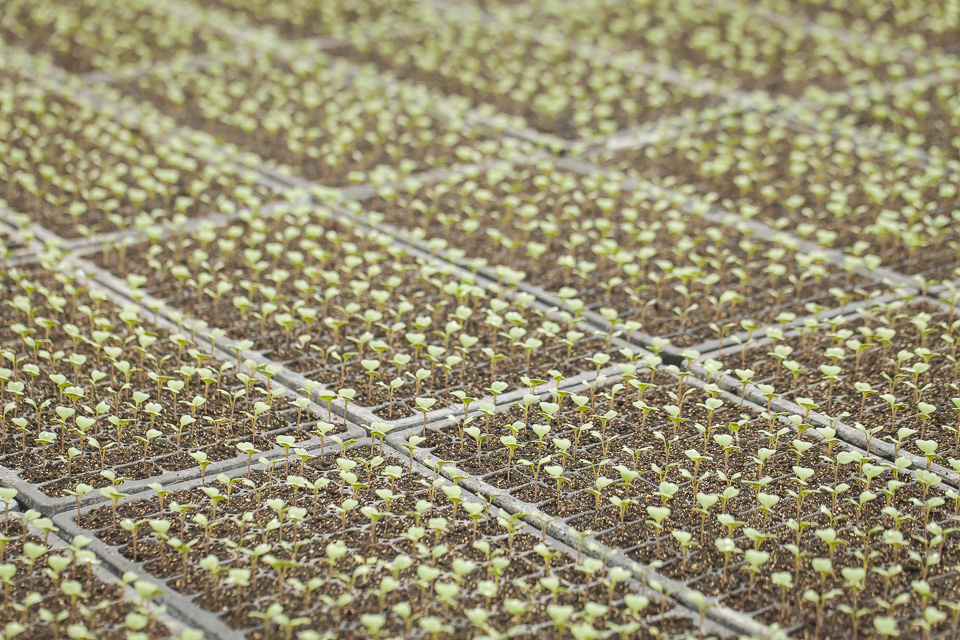 Transplants on transplants. Photo by Scott David Gordon.
Transplants on transplants. Photo by Scott David Gordon.
 Watering the flats. Photo by Scott David Gordon.
Watering the flats. Photo by Scott David Gordon.
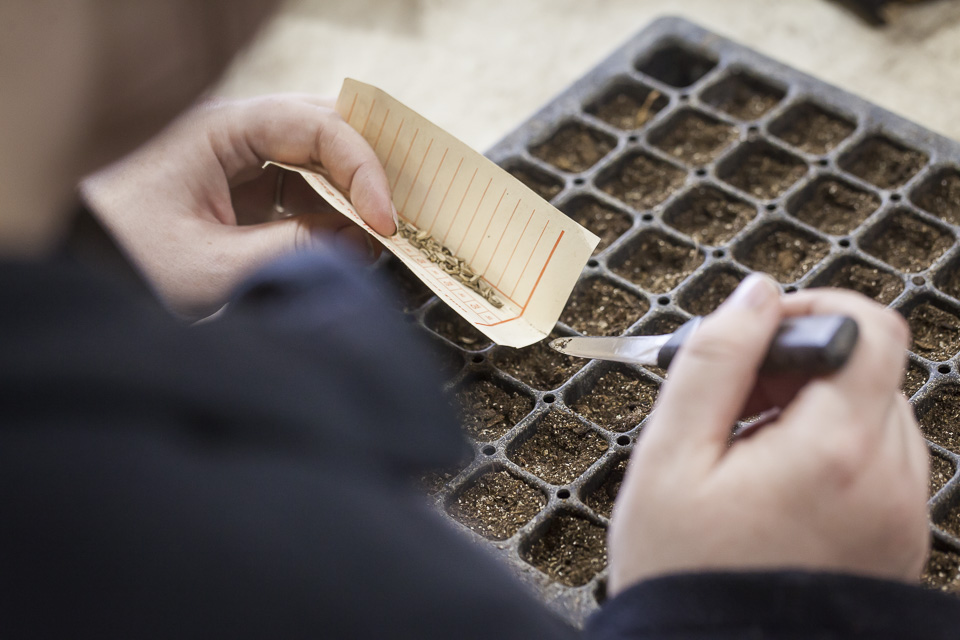 Seeding! Photo by Scott David Gordon.
Seeding! Photo by Scott David Gordon.
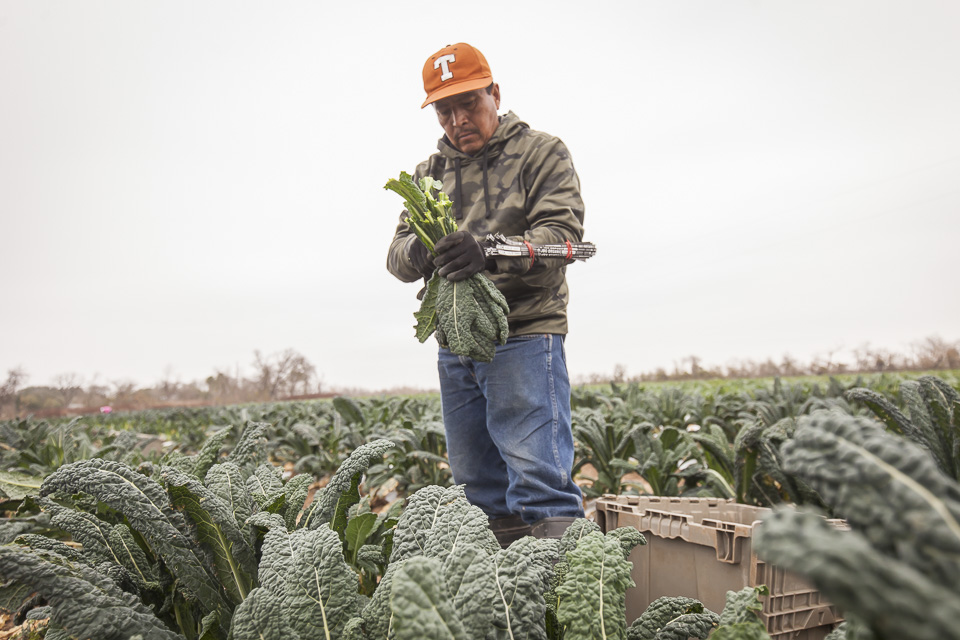 Kale harvest. Photo by Scott David Gordon.
Kale harvest. Photo by Scott David Gordon.
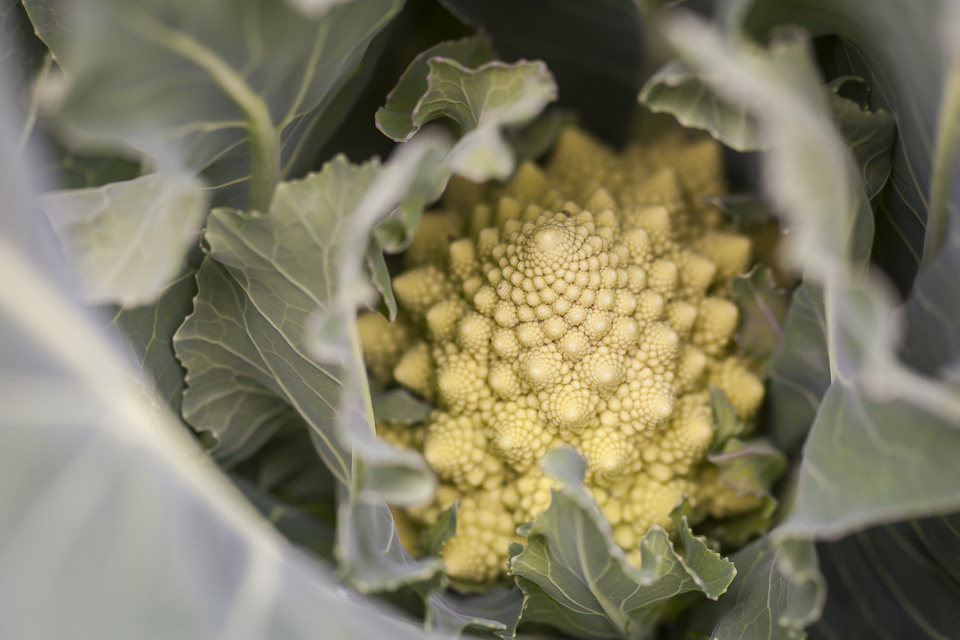 Trippin' out on romanesco. Photo by Scott David Gordon.
Trippin' out on romanesco. Photo by Scott David Gordon.
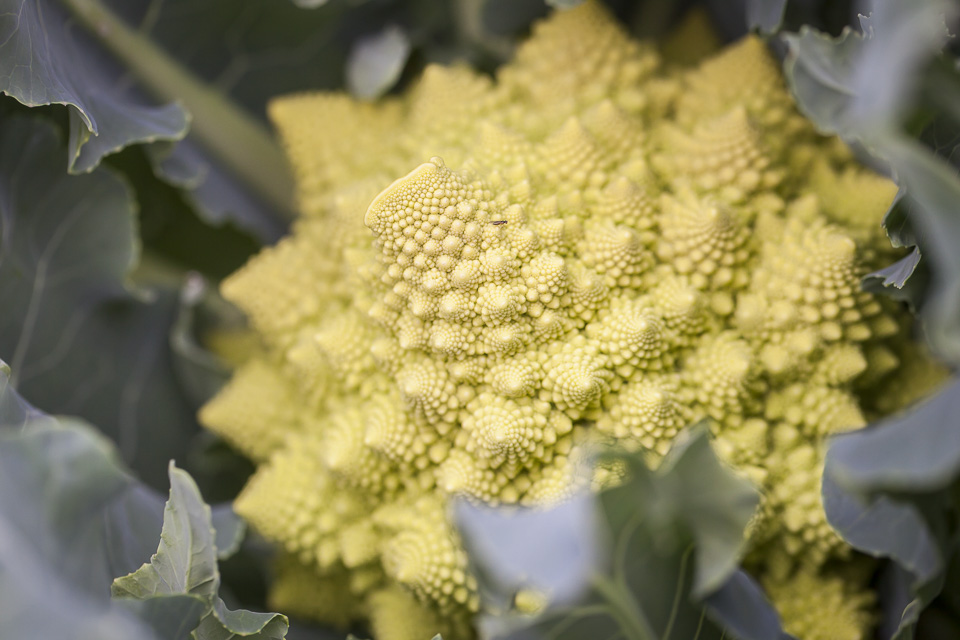 Romanesco beauty. Photo by Scott David Gordon.
Romanesco beauty. Photo by Scott David Gordon.
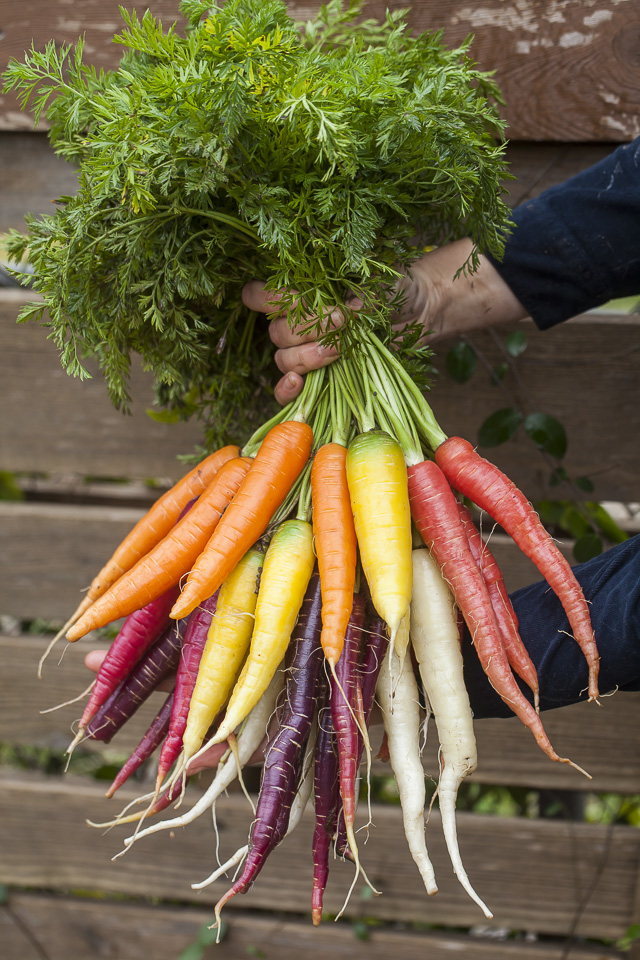 Carrot bounty. Photo by Scott David Gordon.
Carrot bounty. Photo by Scott David Gordon.
 Hey guys! Photo by Scott David Gordon.
Hey guys! Photo by Scott David Gordon.
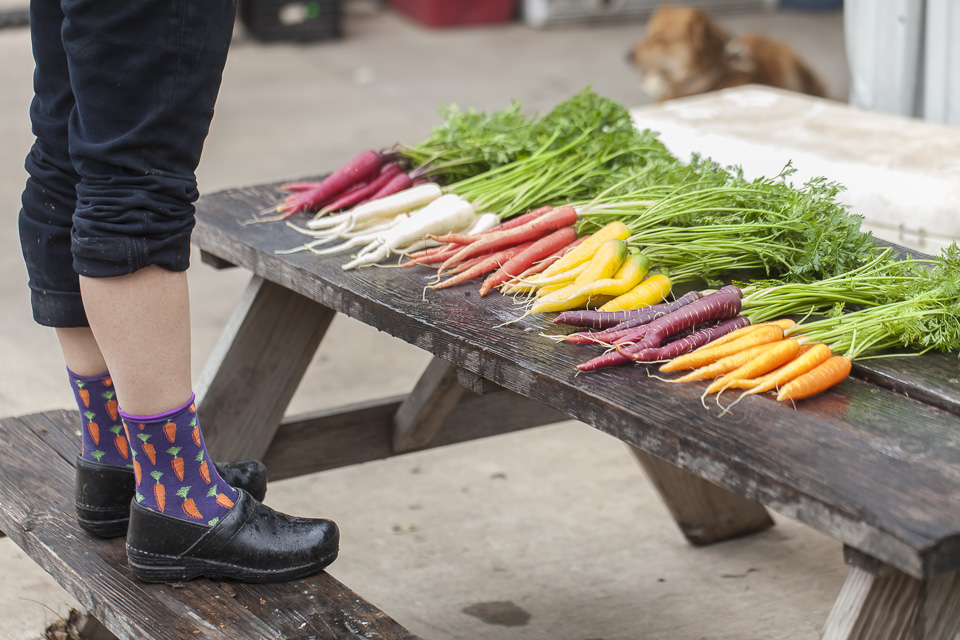 Carrot socks and carrot gradients. Photo by Scott David Gordon.
Carrot socks and carrot gradients. Photo by Scott David Gordon.
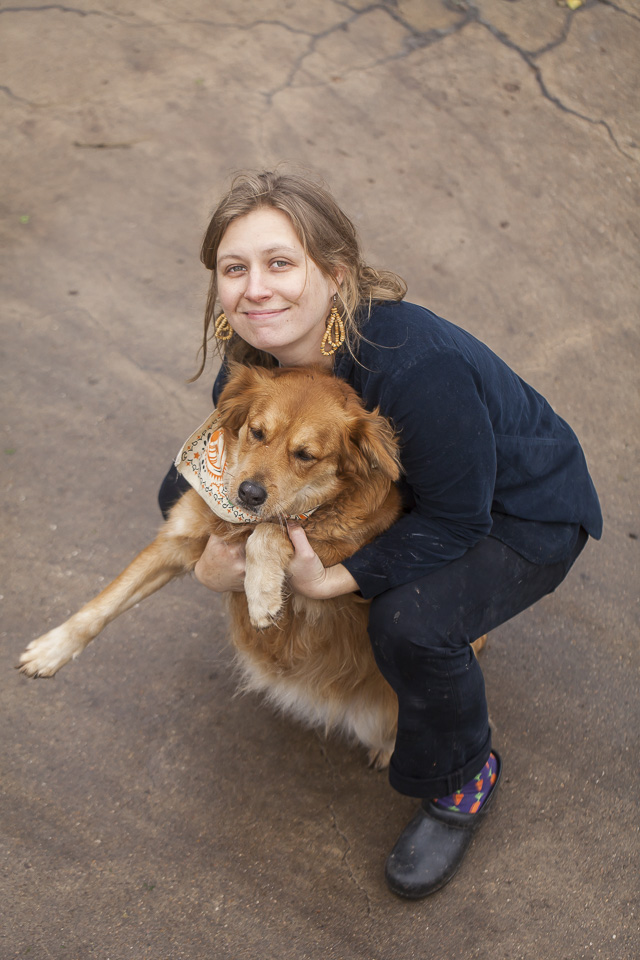 Ada and her pooch, Missoula. Photo by Scott David Gordon.
Ada and her pooch, Missoula. Photo by Scott David Gordon.
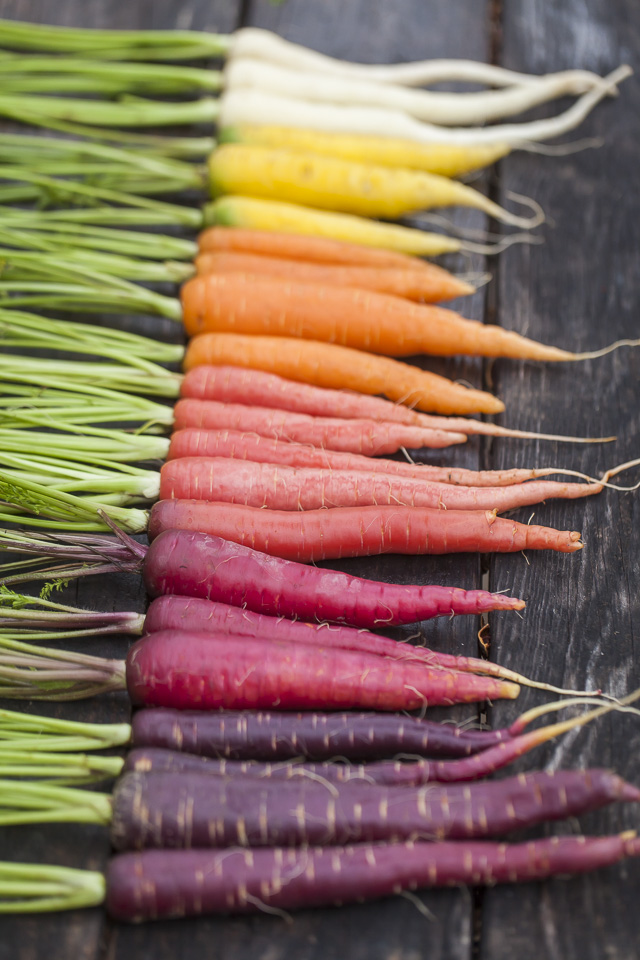 Carrot gradients. Photo by Scott David Gordon.
Carrot gradients. Photo by Scott David Gordon.
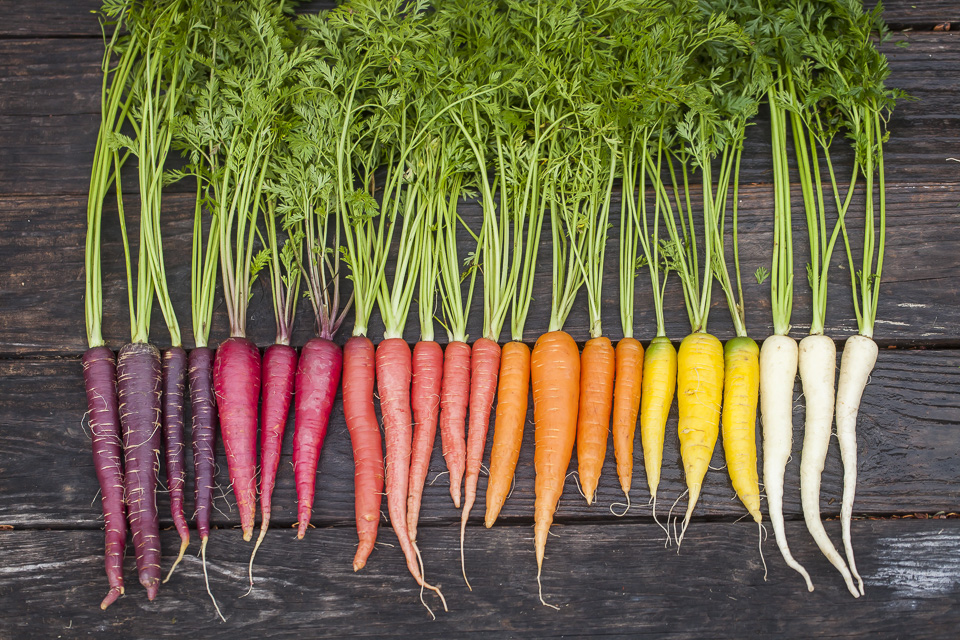 More carrot gradients. Photo by Scott David Gordon.
More carrot gradients. Photo by Scott David Gordon.
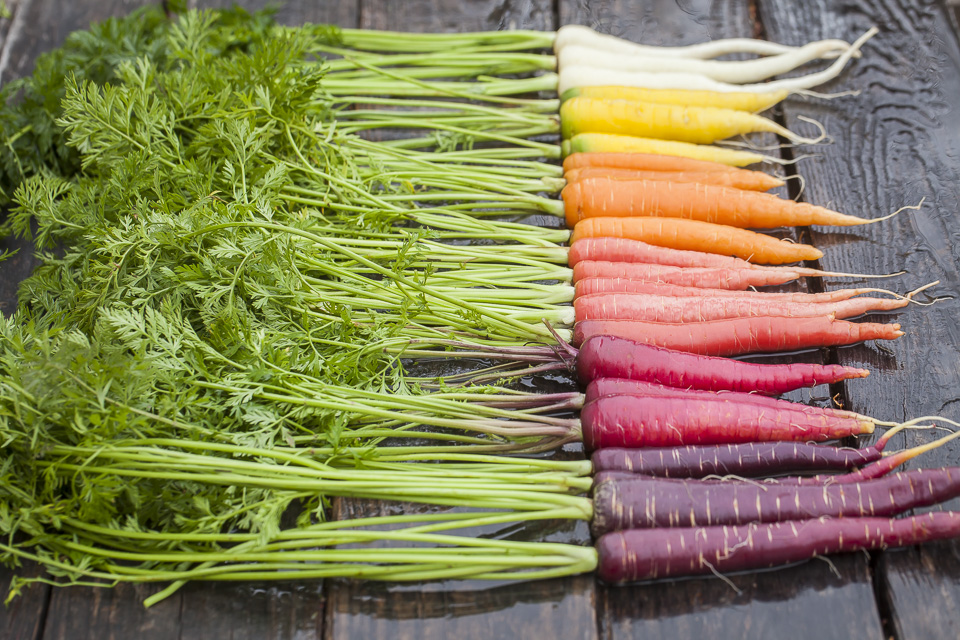 Can't. Get. Enough. Photo by Scott David Gordon.
Can't. Get. Enough. Photo by Scott David Gordon.WHAT DOES IT MEAN TO BE CERTIFIED ORGANIC?
01/18/19 — Heydon Hatcher
As we hurtle towards spring at the farm, busily trying to finalize crop plans, purchase seeds, and get the fields prepared, we are also celebrating finalizing our organic re-certification! (That’s right, all of the veggies in your CSA box are certified 100% organic… sign up now and get your first box free! Just enter “VEGGIEHEAVEN” when you sign up.) We go through the rigorous organic certification process annually, and this year, we thought it would be a good opportunity to tell the JBG community a little bit more about our growing practices at the farm. "Organic" can manifest itself in a number of different ways and we’re thrilled by what we've accomplished here. We also realized that you folks might not know what an organic certification looks like and wanted to let you in on the process.
![]() Early morning harvest. Photo by Scott David Gordon.
Early morning harvest. Photo by Scott David Gordon.
When Brenton first started in the backyard garden, he knew each and every one of his customers and didn't need a USDA seal to tell them about his growing practices. When he became a full-time farmer in 2008, he made the decision to undergo JBG’s first official organic certification, and man, are we glad he made that decision early on! The biggest lesson we’ve all learned is that organic certification requires some meticulous record-keeping - tracking all of our crops from seed to sale. Now that we're on 200 acres, that record keeping has gotten extremely complex, so we’re grateful that our organic certification required us to develop our record-keeping systems early on.
We are certified organic by Nature's International Certification Services (NICS), based out of Wisconsin. When our certifier comes for their annual farm inspection, they take a grand tour of JBG. This includes a field walk, facilities inspections, a look into where we store seeds, tools, amendments, soils, etc., and a sit-down interview where we review our 5-year Organic System Plan (OSP), our records from the previous year and plans for the coming one. We'll walk through an audit of a crop or multiple crops, tracking the vegetable from the purchase of organic seeds, through our greenhouse and planting in the field, to weeding and pest management, to harvest and finally to the customer. Wow! We go into the details of everything from our buffer zones around the farm, to logo colors and placement on our CSA boxes. It's an extremely long and detailed process, but thanks to a hard-working staff we know that we have all of our ducks in a row. For the large part though, the certification looks at the following areas of our production system, with a few details on how we do it at JBG:
![]() Compost fun. Photo by Scott David Gordon.
Compost fun. Photo by Scott David Gordon.
![]() Farm flowers. Photo by Scott David Gordon.
Farm flowers. Photo by Scott David Gordon.
![]() Happy trails! Photo by Scott David Gordon.
Happy trails! Photo by Scott David Gordon.
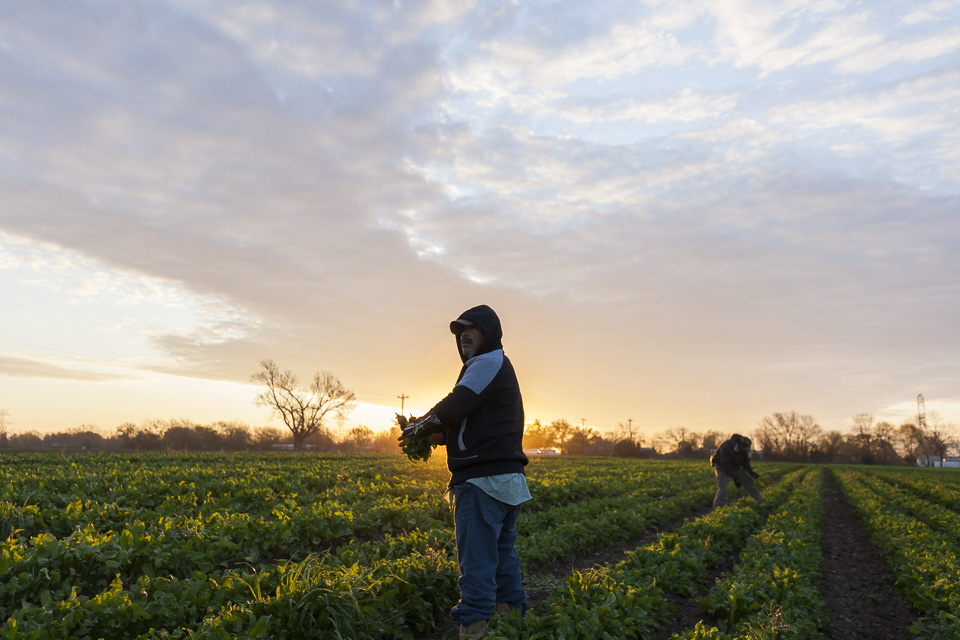 Early morning harvest. Photo by Scott David Gordon.
Early morning harvest. Photo by Scott David Gordon.
When Brenton first started in the backyard garden, he knew each and every one of his customers and didn't need a USDA seal to tell them about his growing practices. When he became a full-time farmer in 2008, he made the decision to undergo JBG’s first official organic certification, and man, are we glad he made that decision early on! The biggest lesson we’ve all learned is that organic certification requires some meticulous record-keeping - tracking all of our crops from seed to sale. Now that we're on 200 acres, that record keeping has gotten extremely complex, so we’re grateful that our organic certification required us to develop our record-keeping systems early on.
We are certified organic by Nature's International Certification Services (NICS), based out of Wisconsin. When our certifier comes for their annual farm inspection, they take a grand tour of JBG. This includes a field walk, facilities inspections, a look into where we store seeds, tools, amendments, soils, etc., and a sit-down interview where we review our 5-year Organic System Plan (OSP), our records from the previous year and plans for the coming one. We'll walk through an audit of a crop or multiple crops, tracking the vegetable from the purchase of organic seeds, through our greenhouse and planting in the field, to weeding and pest management, to harvest and finally to the customer. Wow! We go into the details of everything from our buffer zones around the farm, to logo colors and placement on our CSA boxes. It's an extremely long and detailed process, but thanks to a hard-working staff we know that we have all of our ducks in a row. For the large part though, the certification looks at the following areas of our production system, with a few details on how we do it at JBG:
1. Long-Term Soil Fertility through Ecological Methods
When we grow nutrient-rich food for you and your families, we're pulling a lot of organic matter and nutrients out of our soil! As organic producers, we don't use synthetic fertilizers on the farm, which can cause unintended ecological harm, but rather use natural materials and grow our own fertility:- Crop Rotation. Different types of vegetables take different nutrients from the soil. Our kale will tackle your vitamins A and K requirements, while tomatoes have you covered on vitamin C and biotin! We never plant the same crop twice in a row on the same piece of land, but we rotate our crops around the farm to ensure that we don't deplete our soil of any one nutrient.
- Cover Crops. Did you know that you can actually grow your own fertility? As part of our crop rotation system, we include blocks of cover crops, also known as "green manures," to build both soil fertility and microbiology. This mix of grasses and leguminous crops is planted specifically to be turned back into the soil when fully grown, enriching it with organic matter and nitrogen-fixing bacteria from the legumes! Learn more about our specific cover crops here.
- Compost compost compost! We make sure to add a lot of compost back into our soil - we want to make sure our vegetables have everything they need to grow you the healthiest food! In addition to compost, we are also able to add harder-to-find nutrients into our soil by using things like crushed rocks, bones, or feathers (byproducts of the agriculture industry), and marine products that are byproducts of the fishing industry.
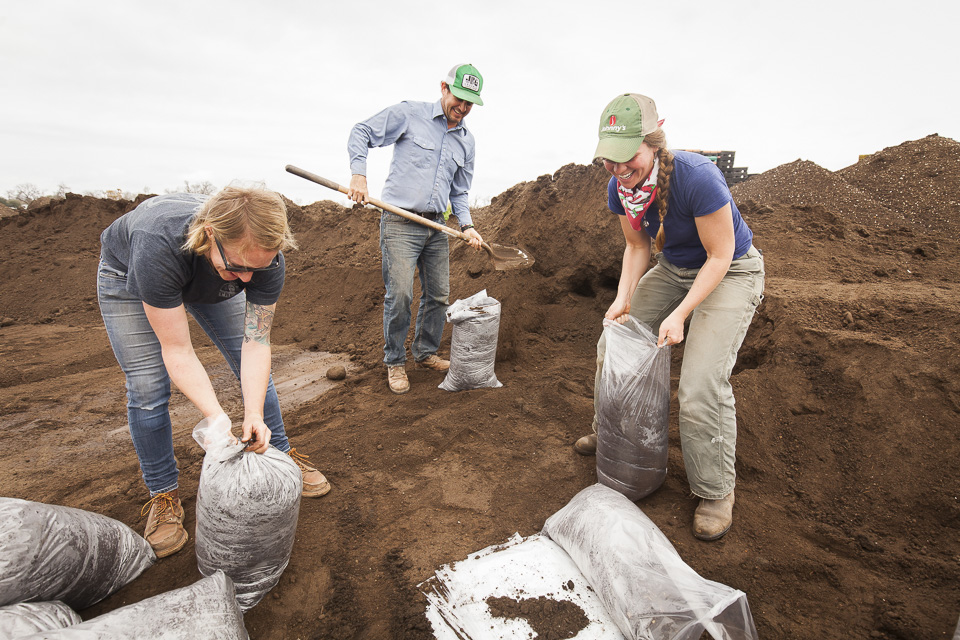 Compost fun. Photo by Scott David Gordon.
Compost fun. Photo by Scott David Gordon.
2. Natural Pest Management
The general idea behind pest management at JBG is that if you have healthy soil and are growing seasonally appropriate crops and varieties, your plants should be healthy and free of pests and disease! This isn't always the case though, and we use an integrated pest management (IPM) system to address our plant health on the farm.- Attract predators. Have you seen our farm flowers yet? In addition to being a beautiful farmer's market buy, our farmscaping efforts attract all kinds of great insects to the farm! In addition to pollinators like honey bees, flowering plants attract ladybugs to combat aphids, syrphid flies to attack thrips, and lacewings for pesky caterpillars! We like to let some of our fennel, parsley and arugula crops go to seed to help feed the good bugs as well. We installed bat houses on the farm in 2015, a unique Austin solution to combating crop-eating bugs!
- Natural compounds. Sometimes, in order to save a crop, we have to attack the pests ourselves. Temo injected a mix of rosemary oil and other natural herbal oils to our drip system to save our potatoes after a cool, damp Spring season years ago. Read more about that here. We use this method of organic-approved compounds as a last resort since we don't want to hurt those beneficial insects as well.
- Physical methods. Our Head Grower, Temo, also came up with the great idea to vacuum bugs off of the crops once! Have we mentioned how great Temo is at his job? Another physical method we use is our crop rotation - by growing a crop in a different area of the farm each year, we try to keep pests from finding it - like a grower's game of hide and seek. Our big plans for the future are to grow alternating years between two different farm locations, both to help break the pest cycle and increase soil fertility. This is also how we manage weeds on the farm -- lots and lots of physical labor. While we do use tractors to help us weed, a large majority is done by hand, by our hard-working field crews!
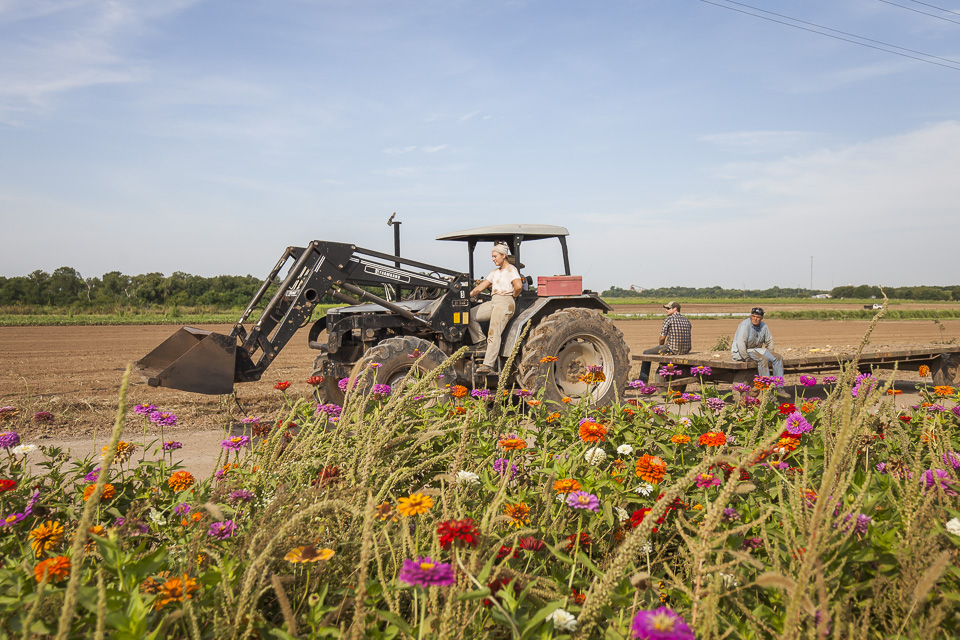 Farm flowers. Photo by Scott David Gordon.
Farm flowers. Photo by Scott David Gordon.
3. Biodiversity on the Farm and Surrounding Ecosystem
As a general rule, ecosystems that have more biodiversity - the number of different plants, animals, insects, etc - are inherently more stable and healthy without additional inputs. We strive to achieve this at JBG in a number of ways:- A diverse mix of crops. Did you know that we grew over 250 different varieties of crops last year? While this leads to a lot of record-keeping, it also provides you and your family with a plethora of options in your CSA boxes!
- Farmscaping. Our flowering plants attract a huge variety of beneficial insects and pollinators to the farm, which also helps with pest management!
- Buffer zones and riparian areas. We maintain a 40 ft zone around the entire farm to avoid material drift and to provide habitat for native plants and animals. In addition, we have a buffer around the waterways that run around and through our farm, which are host to a number of birds, bees, animals, reptiles, and more!
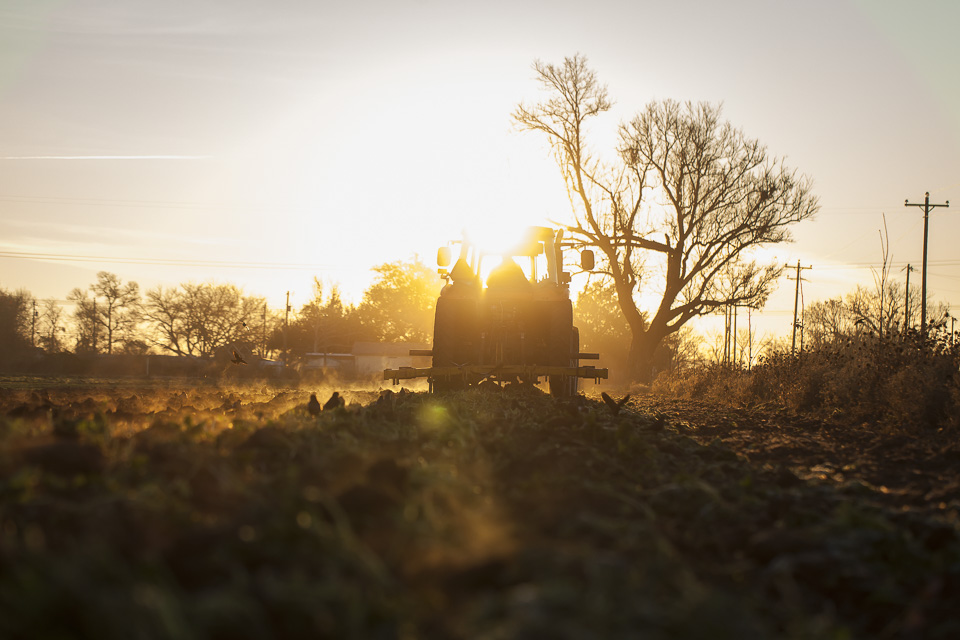 Happy trails! Photo by Scott David Gordon.
Happy trails! Photo by Scott David Gordon.RIBOLLITA TUSCAN BREAD SOUP
01/17/19 — Heydon Hatcher
Servings: 6 / Total Time: 90 minutes / Author: The Migoni Kitchen
Our recent trip to Italy only spurred our love and passion for Italian food. We loved learning about the traditional dishes from each city we visited. In Florence, Ribollita was on nearly every lunch menu. It's a very simple but hearty and flavorful vegetable-based soup, perfect to warm up in this chilly winter weather.
Ribollita means "re-boiled" in Italian. This soup has peasant origins, when people would take their leftover vegetable soup and re-boil it with stale bread for a hearty filling meal. It usually features white beans like Cannellini beans, carrots, cabbage, onion, celery, potatoes, and kale. Luckily, we get almost all of these vegetables in our CSA box, making this soup a no-brainer for this week's lunches.
![]() Photo by The Migoni Kitchen.
Photo by The Migoni Kitchen.
![]() Ingredients. Photo by The Migoni Kitchen.
Ingredients. Photo by The Migoni Kitchen.
Add carrots, celery, potatoes, and cabbage and continue to saute another 5-10 minutes.
Next, add diced tomatoes and beans and stir to combine.
Add chicken broth and bring to a simmer. Cover and let cook about 30-35 minutes or until potatoes are soft.
Next, add in pieces of bread, a few at a time, being sure to immerse them completely in the broth. Stir well to combine and break up the pieces of bread.
Next, blend using an immersion blender directly in the pot, or in batches in a blender. The soup should be thick, but you can thin it out to your preference with some water.
Season with salt and pepper to taste.
Lastly, add in roughly chopped kale and stir until wilted slightly.
Serve soup with a drizzle of olive oil and some grated parmesan cheese.
![]() Final product! Photo by The Migoni Kitchen.
Final product! Photo by The Migoni Kitchen.
Our recent trip to Italy only spurred our love and passion for Italian food. We loved learning about the traditional dishes from each city we visited. In Florence, Ribollita was on nearly every lunch menu. It's a very simple but hearty and flavorful vegetable-based soup, perfect to warm up in this chilly winter weather.
Ribollita means "re-boiled" in Italian. This soup has peasant origins, when people would take their leftover vegetable soup and re-boil it with stale bread for a hearty filling meal. It usually features white beans like Cannellini beans, carrots, cabbage, onion, celery, potatoes, and kale. Luckily, we get almost all of these vegetables in our CSA box, making this soup a no-brainer for this week's lunches.
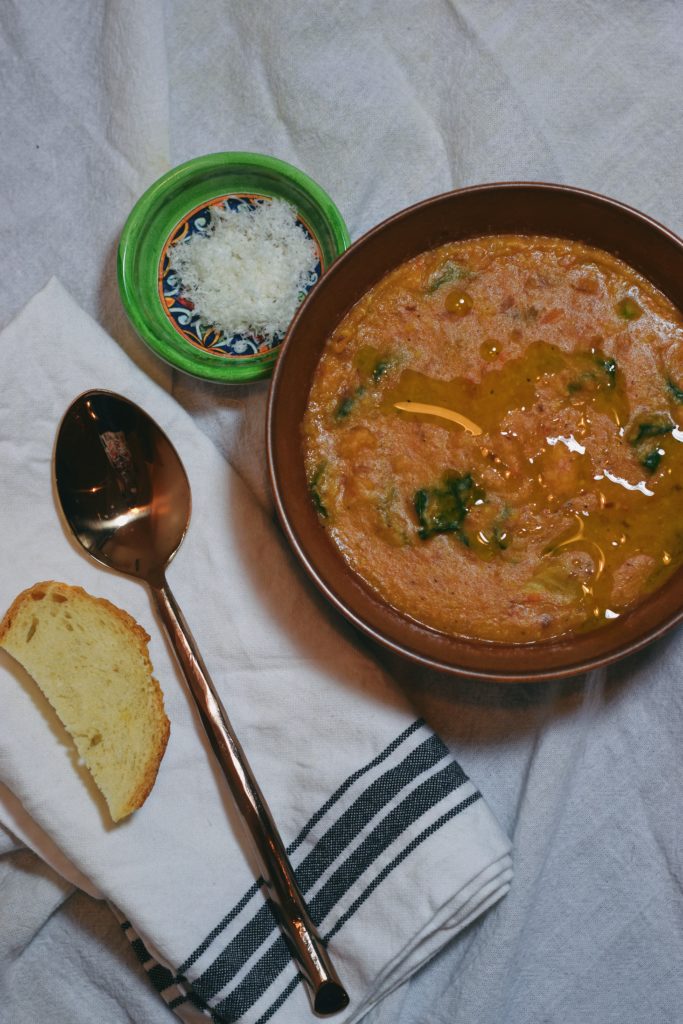 Photo by The Migoni Kitchen.
Photo by The Migoni Kitchen.
Ingredients:
- 2.5 Tbsp extra virgin olive oil, Plus more for drizzling
- 1 yellow onion, Diced
- 3 Carrots, Diced
- 2 Stalks Celery, Diced
- 2 Medium Potatoes, Diced
- 1/4 Head Green Cabbage, Shredded
- 1 14 Ounce Can Diced Tomatoes
- 4 Cups Low-Sodium Chicken or Vegetable Broth
- 1 14 Ounce Can Cannellini Beans or Pinto Beans, Drained and rinsed
- 1.5 Cups Stale White Bread, such as Sourdough, Roughly Chopped
- 1 Head Tuscan (Lacinato) Kale, Roughly Chopped
- Salt and pepper to taste
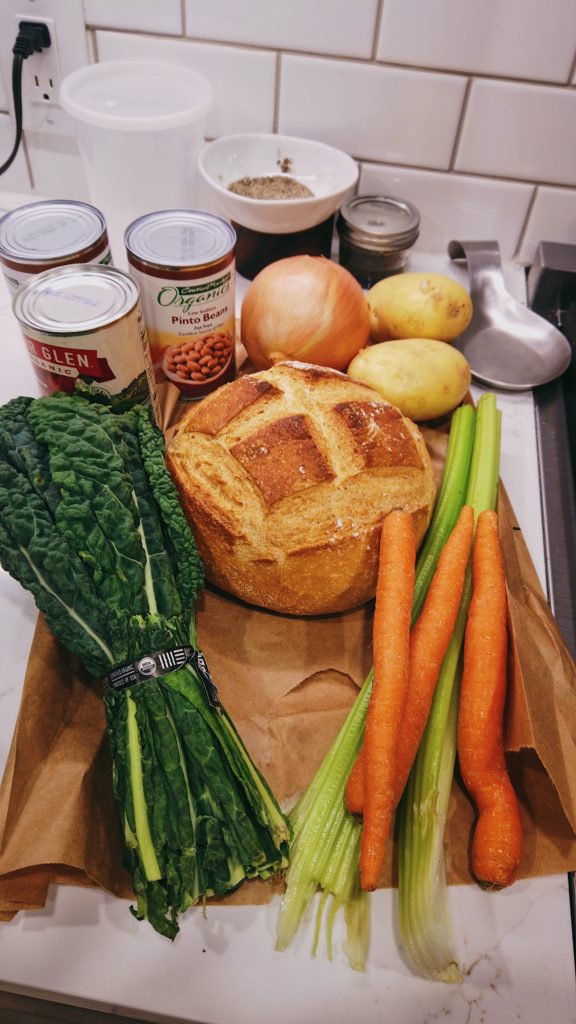 Ingredients. Photo by The Migoni Kitchen.
Ingredients. Photo by The Migoni Kitchen.
Instructions:
In a large Dutch Oven or pot, heat up olive oil. Add diced onions and saute about 5 minutes or until translucent.Add carrots, celery, potatoes, and cabbage and continue to saute another 5-10 minutes.
Next, add diced tomatoes and beans and stir to combine.
Add chicken broth and bring to a simmer. Cover and let cook about 30-35 minutes or until potatoes are soft.
Next, add in pieces of bread, a few at a time, being sure to immerse them completely in the broth. Stir well to combine and break up the pieces of bread.
Next, blend using an immersion blender directly in the pot, or in batches in a blender. The soup should be thick, but you can thin it out to your preference with some water.
Season with salt and pepper to taste.
Lastly, add in roughly chopped kale and stir until wilted slightly.
Serve soup with a drizzle of olive oil and some grated parmesan cheese.
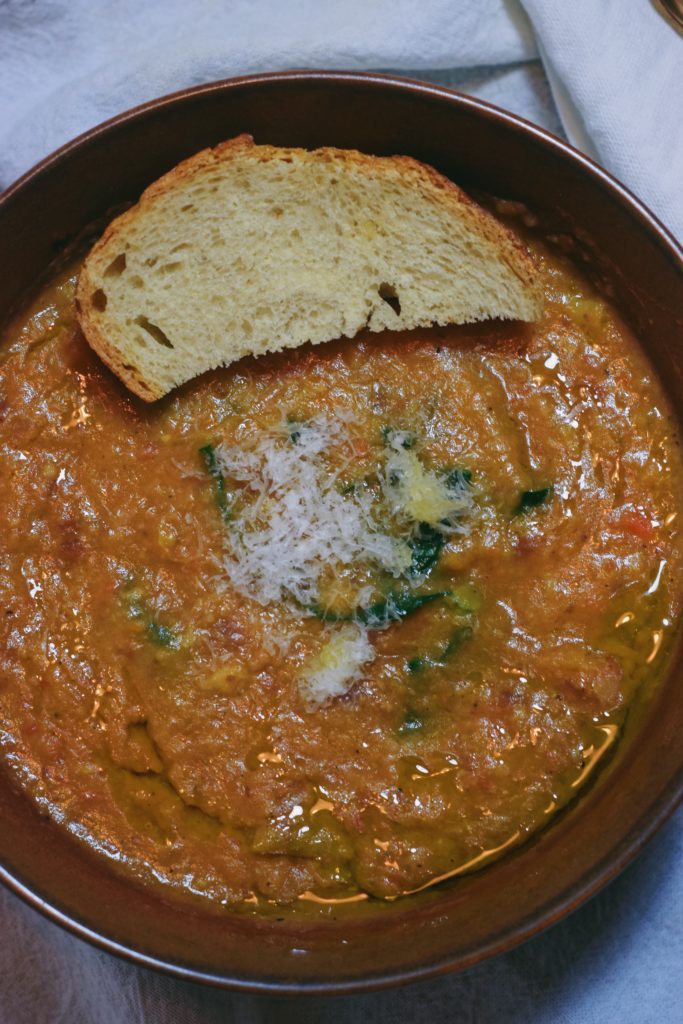 Final product! Photo by The Migoni Kitchen.
Final product! Photo by The Migoni Kitchen.CSA BOX CONTENTS WEEK OF JAN 14TH
01/15/19 — Scott
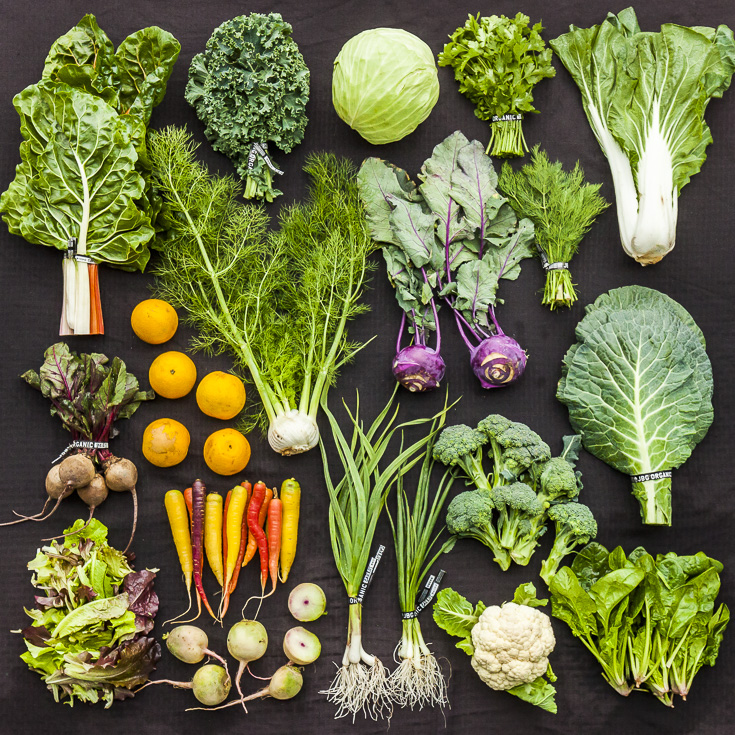 CSA Box Contents Week of Jan 14th
CSA Box Contents Week of Jan 14th
Large Box
Bok Choy
Broccoli
Cabbage
Carrot, Rainbow
Cauliflower
Garlic, Green
Greens, Chard, Rainbow
Greens, Collards
Greens, Spinach
Herb, Parsley, Flat
Radish, Green Daikon
Turnip, Rutabaga
Bok Choy
Broccoli
Cabbage
Carrot, Rainbow
Cauliflower
Garlic, Green
Greens, Chard, Rainbow
Greens, Collards
Greens, Spinach
Herb, Parsley, Flat
Radish, Green Daikon
Turnip, Rutabaga
Medium Box
Bok Choy
Broccoli
Carrot, Rainbow
Citrus, Mixed
Greens, Chard, Rainbow
Greens, Collards
Greens, Spinach
Kohlrabi, Purple
Onion, Multiplying
Radish, Red
Bok Choy
Broccoli
Carrot, Rainbow
Citrus, Mixed
Greens, Chard, Rainbow
Greens, Collards
Greens, Spinach
Kohlrabi, Purple
Onion, Multiplying
Radish, Red
Small Box
Bok Choy
Cabbage
Carrot, Orange
Greens, Kale, Curly
Herb, Fennel
Onion, Multiplying
Turnip, Rutabaga
Bok Choy
Cabbage
Carrot, Orange
Greens, Kale, Curly
Herb, Fennel
Onion, Multiplying
Turnip, Rutabaga
Individual Box
Carrot, Orange
Cauliflower
Garlic, Green
Greens, Kale, Curly
Herb, Fennel
Carrot, Orange
Cauliflower
Garlic, Green
Greens, Kale, Curly
Herb, Fennel
30 AT HOME CHALLENGE SPOTLIGHT WITH FOUNDER, MARTHA PINCOFFS
01/11/19 — Heydon Hatcher
We had the immense pleasure of being welcomed into the lively home of Martha Pincoffs and her wife, Jo, on an uncharacteristically warm winter day this week. Martha, a native Austinite, creative strategist, and bonafide entrepreneur, is a true Renaissance woman. She came onto the JBG radar whilst she was running Hat Creek Provisions (now Barrel Creek Provisions), a fermented vegetable brand, and Hot Dang, a veggie burger company. After her latest stint of leaving food altogether and running Justin Nelson’s race for Attorney General, Martha has redefined herself once again. She is now building a new company that focuses on systematic change, Waking Giants. We met Martha to talk about the 30 at Home Challenge.
The 30 at Home Challenge is a Waking Giants brainchild which calls for people to cook all or some meals at home every day for 30 days, and in turn, revolutionizes one’s relationship with food. Some of the JBG staff have been participating in this challenge for the past few years, and love it. Here at JBG, we relish the way this challenge energizes people to use their home kitchens and cook… everyday! This year, we wanted to chat with the mastermind and get the lowdown on this profound perspective-shifting idea. Refocusing people on cooking at home and inherently making people more cognizant of their consumption, Pincoffs’ 30 at Home Challenge pushes people out of their comfort zone... and that’s exactly what she wants.
As we were led into Pincoffs’ bright and open kitchen followed by their black lab, Flossie, Jo headed back into her home office to continue her work day. We didn’t waste any time delving into our burning questions about this hard-working force of nature's past, the Challenge, and what she was making us for lunch.
![]() Martha at her kitchen table with oodles of JBG veggies. Photo by Scott David Gordon.
Martha at her kitchen table with oodles of JBG veggies. Photo by Scott David Gordon.
The first thing I did was meet with my friend’s moms who were really good cooks and I cooked with them to see if I liked it. Then I worked in a restaurant in Fredericksburg under Rebecca Rather. She’s crazy talented and I loved it.
The common thread through all of the jobs is systemic change. Food is systemic change. It represents supporting a way of life that actually supports our health and investing in a way of life that supports community and environment.
![]() Martha cooking us lunch. Photo by Scott David Gordon.
Martha cooking us lunch. Photo by Scott David Gordon.
![]() Martha and her wife, Jo. Photo by Scott David Gordon.
Martha and her wife, Jo. Photo by Scott David Gordon.
We did not feel sick once that year. Our house was full of life and full of friends. We were super social and very intimate at the same time. It’s really intimate to have people in your house, and I love it actually. We spent lots of time on the porch, and obviously, lots of time cooking. We had some pretty terrible experiments, like frying corn dogs. We never got refried beans right either, but it was FUN. I became a better cook, I got more physically in tune with the seasons, and my body loved it. Our wallets loved it, too. You can have the most magnificent meal ever at home for what you spend on tacos which is really cool. I got red snapper yesterday which is kind of expensive, but if you’re spending $35 to feed five people a wonderful meal, it’s kind of a no-brainer.
The rules for the challenge… for me, I keep it all local. I go to the farmers market every Sunday. I usually stock up for the week, but depending on what we cook, I might go back on Wednesdays and re-stock. I go to the grocery store sometimes to fill in, Wheatsville does an amazing job of supporting local. I have my own rules, I make all of our meals at home. Like yesterday, my son and I were out for the afternoon, so I made sandwiches and stuff. While all of his friends ate pizza, we had sandwiches, and he wasn’t even sad! I’m a total purist, but I have friends who will cook once a day and that is a huge change. The intention of starting 30 at Home is to get people out of their comfort zone and to think a little bit more about consumption. 30 days is a great challenge for me personally, too.
The time part is a falsehood because if you do the math, the time you spend going to the restaurant, spending time at the restaurant, and then traveling home, altogether that’s a lot of time. It’s a little bit of a convenience fallacy, which is part of what the challenge can break. If you’re able to actually do it for 30 days, and experience that we are finished at 6:30 no matter what... might as well save money and eat better.
![]() Martha. Photo by Scott David Gordon.
Martha. Photo by Scott David Gordon.
![]() Sticky note meal planning. Photo by Scott David Gordon.
Sticky note meal planning. Photo by Scott David Gordon.
![]() JBG folk + Martha. Photo by Scott David Gordon.
JBG folk + Martha. Photo by Scott David Gordon.
![]() Martha's drawing cookbook. Photo by Scott David Gordon.
Martha's drawing cookbook. Photo by Scott David Gordon.
![]() Some of Martha's favorite cookbooks. Photo by Scott David Gordon.
Some of Martha's favorite cookbooks. Photo by Scott David Gordon.
![]() Perusing the cookbooks. Photo by Scott David Gordon.
Perusing the cookbooks. Photo by Scott David Gordon.
If there is someone who’s a real tinkerer and they want to get things just right, bake because you have to get things just right. If you fly by the seat of your pants and just want to try new stuff, do it. Take a knife skills class because that’s definitely worth knowing, and get cooking! It really is a joyful thing to cook and feed people, so have fun.
![]() A bookshelf in Pincoffs' home. Jo loves largescale objects and has them peppered all over the house. Photo by Scott David Gordon.
A bookshelf in Pincoffs' home. Jo loves largescale objects and has them peppered all over the house. Photo by Scott David Gordon.
A huge thanks to Martha and her wife, Jo! Thanks for hosting us, feeding us, and answering all of our questions. 'Til next time!
![]() Photos by Scott David Gordon.
Photos by Scott David Gordon.
The 30 at Home Challenge is a Waking Giants brainchild which calls for people to cook all or some meals at home every day for 30 days, and in turn, revolutionizes one’s relationship with food. Some of the JBG staff have been participating in this challenge for the past few years, and love it. Here at JBG, we relish the way this challenge energizes people to use their home kitchens and cook… everyday! This year, we wanted to chat with the mastermind and get the lowdown on this profound perspective-shifting idea. Refocusing people on cooking at home and inherently making people more cognizant of their consumption, Pincoffs’ 30 at Home Challenge pushes people out of their comfort zone... and that’s exactly what she wants.
As we were led into Pincoffs’ bright and open kitchen followed by their black lab, Flossie, Jo headed back into her home office to continue her work day. We didn’t waste any time delving into our burning questions about this hard-working force of nature's past, the Challenge, and what she was making us for lunch.
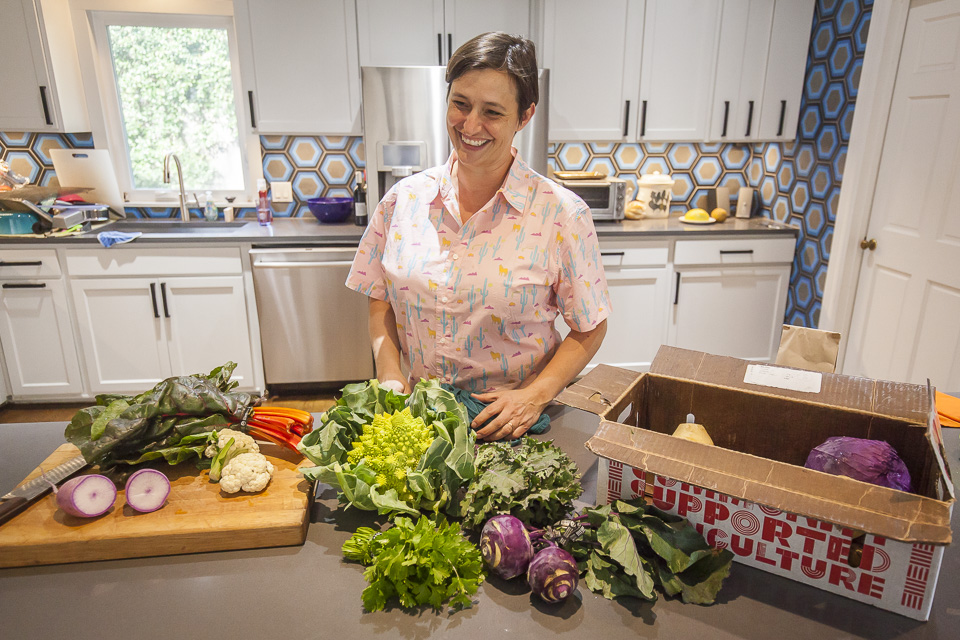 Martha at her kitchen table with oodles of JBG veggies. Photo by Scott David Gordon.
Martha at her kitchen table with oodles of JBG veggies. Photo by Scott David Gordon.
What do you currently do for work?
I’m building a new business right now called Waking Giants. The focus of it is working with people companies and nonprofits that are interested in systemic change. The systems are broken, and my work in food is the first thing that really showed me how broken they are. It applies way outside of that, too.What got you interested in local agriculture, and why do you care about shopping locally?
I left real estate, a job I had for 5 years, to start cooking. I went to culinary school when I turned 30. The minute I picked up the food and started touching it, I got curious about where it came from, who touched it, how it was treated, and what goes into the food. My head exploded with questions. As I started pulling the thread on these questions, all points led to supporting local agriculture. What y'all are doing at JBG is really interesting to me because you have figured out how to achieve a level of scale and have commercial accounts. I ran Hat Creek Provisions for a while and you guys were one of my main suppliers. It’s also the best-tasting food, it requires the least amount of manipulation. You can roast it, slice it really thin and put a little acid on it, and it’s going to taste great. It doesn’t require anything.Why culinary school?
One of my real estate clients was a restauranteur. He hired me to project manage the opening of Garrido’s which was a restaurant that was here in Austin for a while. I fell in love with the creative parts of it. David Garrido is an incredible chef. I got to watch him in the kitchen and I was like that is WAY more fun... I want to do that. It’s so much more soulful than real estate. It was not an easy transition, though. I was leaving something really secure, for something really undefined. It’s been great. I would never undo it.The first thing I did was meet with my friend’s moms who were really good cooks and I cooked with them to see if I liked it. Then I worked in a restaurant in Fredericksburg under Rebecca Rather. She’s crazy talented and I loved it.
The common thread through all of the jobs is systemic change. Food is systemic change. It represents supporting a way of life that actually supports our health and investing in a way of life that supports community and environment.
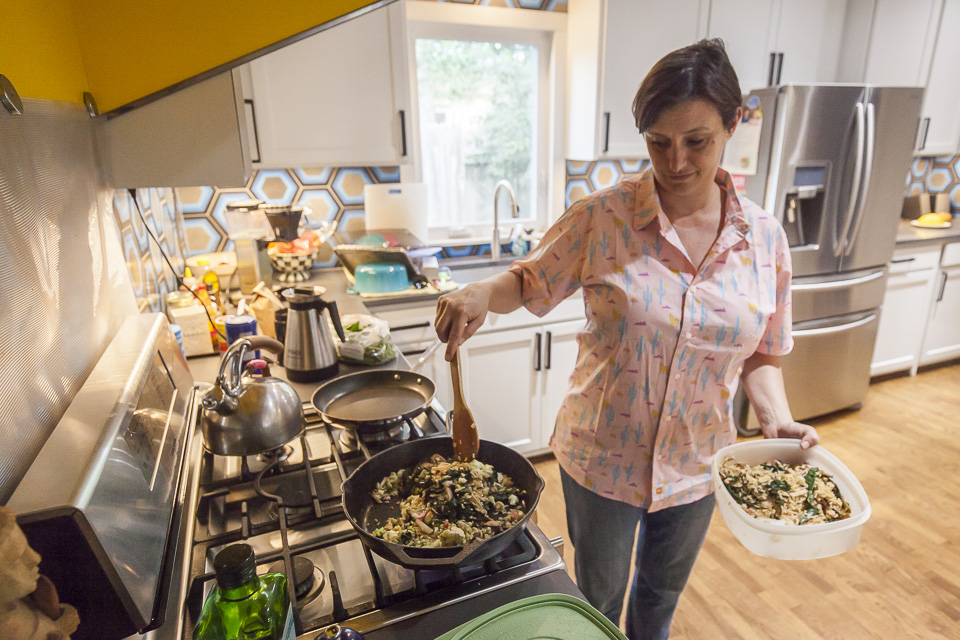 Martha cooking us lunch. Photo by Scott David Gordon.
Martha cooking us lunch. Photo by Scott David Gordon.
What is 30 at home? What inspired you to start it and what are the rules?
What inspired me to start it is Jo and I watched some movie years ago - No Impact Man. After we watched it, my wife was like we are going to using t-shirts instead of toilet paper, and I was like no we are not! He really made no impact, he turned his AC off in August, which I wasn’t ready to do. However, I was absolutely ready and willing to commit to sourcing all of our food locally. We were really very rigorous about that for the year. I would go to three different markets a day… Whole Foods for this thing and Wheatsville for this thing. We also didn’t shop for clothes that year. It was really just an exercise in understanding our consumption.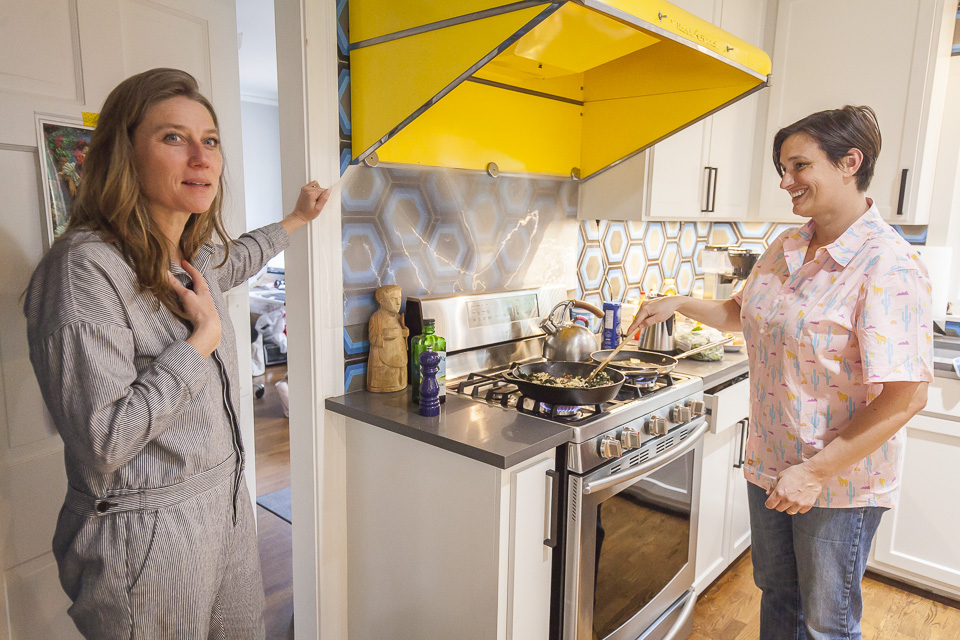 Martha and her wife, Jo. Photo by Scott David Gordon.
Martha and her wife, Jo. Photo by Scott David Gordon.
We did not feel sick once that year. Our house was full of life and full of friends. We were super social and very intimate at the same time. It’s really intimate to have people in your house, and I love it actually. We spent lots of time on the porch, and obviously, lots of time cooking. We had some pretty terrible experiments, like frying corn dogs. We never got refried beans right either, but it was FUN. I became a better cook, I got more physically in tune with the seasons, and my body loved it. Our wallets loved it, too. You can have the most magnificent meal ever at home for what you spend on tacos which is really cool. I got red snapper yesterday which is kind of expensive, but if you’re spending $35 to feed five people a wonderful meal, it’s kind of a no-brainer.
The rules for the challenge… for me, I keep it all local. I go to the farmers market every Sunday. I usually stock up for the week, but depending on what we cook, I might go back on Wednesdays and re-stock. I go to the grocery store sometimes to fill in, Wheatsville does an amazing job of supporting local. I have my own rules, I make all of our meals at home. Like yesterday, my son and I were out for the afternoon, so I made sandwiches and stuff. While all of his friends ate pizza, we had sandwiches, and he wasn’t even sad! I’m a total purist, but I have friends who will cook once a day and that is a huge change. The intention of starting 30 at Home is to get people out of their comfort zone and to think a little bit more about consumption. 30 days is a great challenge for me personally, too.
When you did a year at home, were you strict? Did you make exceptions?
I was incredibly strict and did not make exceptions. When we traveled, we would have to eat out, but we didn’t travel very much that year. It got to the point where on a couple occasions, we got way too drunk because we would meet friends out, and we weren’t eating out, so… whoops. That’s something to keep in mind.What do you think the biggest hangup is for people cooking at home? What is your proposed solution?
I think a lot of people just don’t know how to make things and are nervous to make it wrong. There are some super basic skills with which you can make tasty food. Like roast your veggies at 425 degrees, use enough oil and salt, and it’s going to taste good 20 minutes later. It puts vegetables to use beautifully. It’s the skills gap in my mind that scare people off.The time part is a falsehood because if you do the math, the time you spend going to the restaurant, spending time at the restaurant, and then traveling home, altogether that’s a lot of time. It’s a little bit of a convenience fallacy, which is part of what the challenge can break. If you’re able to actually do it for 30 days, and experience that we are finished at 6:30 no matter what... might as well save money and eat better.
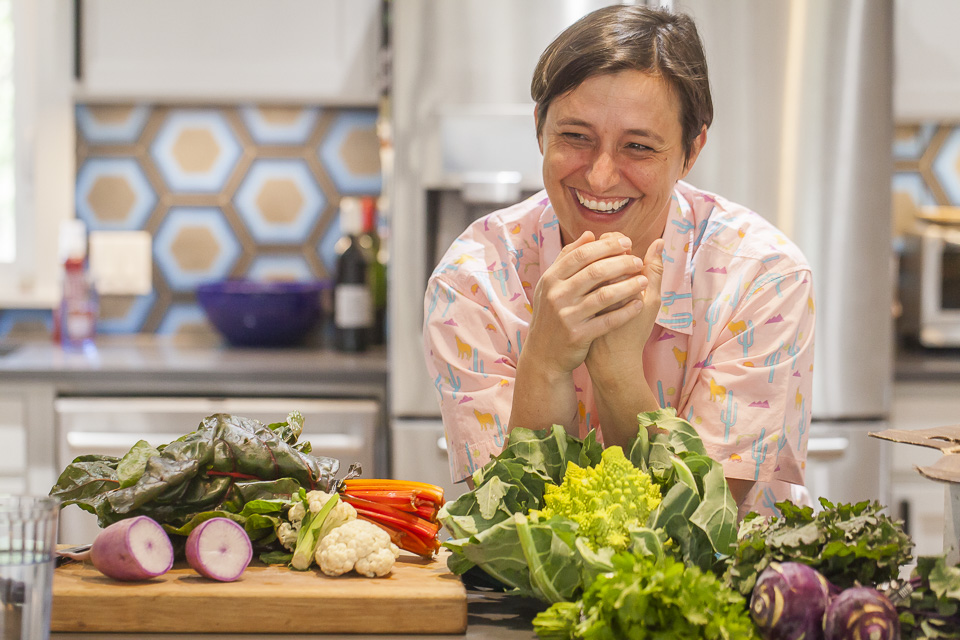 Martha. Photo by Scott David Gordon.
Martha. Photo by Scott David Gordon.
What mistake do you think people make when they are trying to cook more?
People shoot the runway, buy more than they are going to use, and then feel really bad when they don’t use all the produce. Veggie shame. I waste so much less when I’m in the 30 at Home Challenge. Because I’m committed to being at home, even for breakfast or lunch, if I have extra veggies, I’ll just chop them up and put an egg on it. I would encourage people to start small and make it more manageable.What are a couple skills that you would recommend to the new home cook?
Sharpen your knives, use more salt, get your pan hot before you put the food in it, and roast your vegetables hotter.Is there anything you do when you first get your CSA box to ensure that you waste less?
I have this method of meal-planning that I like to do. Part of what I do is draw… I have an awesome cookbook that I’ve been compiling (see below). Another good exercise is to look at veggies in the box, and write out what you are thinking about cooking for the week. I write recipes out on sticky notes. It’s great to eliminate places where you can mess up during the challenge, and I can get pretty scattered during the week. Breakfast is usually oatmeal or eggs, lunch is usually dinner leftovers so I don’t need much planning there. But for dinner, I write out the meals when I get my produce, and put them on the wall in the kitchen. This allows for easy altering and moving of scheduled recipes to another night if I don’t make the specific dish as I’ve planned. This makes it easier to not get down on myself either. Sticky note meal planning. Photo by Scott David Gordon.
Sticky note meal planning. Photo by Scott David Gordon.
When cooking for a family, how do you please everyone’s tastes?
It just doesn’t happen. I have two kids, and my son is a pretty adventurous eater. They are usually more amenable if I invite them to cook with me, but I don’t always invite them to cook with me because I like to cook by myself sometimes. I always try to have one element that they’ll eat, and the rest I’ll try to encourage them to taste. They might or might not. I just attempt to push them to try new dishes.What’s something exciting that you recently cooked?
I made fish sandwiches last night... that was really good. Red snapper, all JBG veggies, slaw, and an avocado spread. My son helped me cook it! He was super proud.Any favorite veggies in season currently?
I’m obsessed with watermelon radish and romanesco... I love the stunners.You got home late from work, you’re pretty tired, you haven’t been to the grocery store in a couple of days, what do you whip up for dinner?
I have a freezer full of backups. When I’m making something that will freeze well like beans or soup, I will always make a double batch and freeze what we don’t use. If I know I’m going to have a busy day, I’ll try to do something in the crockpot, too. JBG folk + Martha. Photo by Scott David Gordon.
JBG folk + Martha. Photo by Scott David Gordon.
How do you describe your style of cooking?
Really simple and straightforward. I’ll try to do the least amount of manipulation that I can get away with. My wife loves making Asian food and is a macrobiotic enthusiast.What are five ingredients that you always try to have on hand to complement cooking our veggies?
Lemons or some citrus, good salt, good olive oil, some grain that I’m happy with and maybe some beans.Any new recipe you are looking forward to trying this January?
Truthfully, I’m not getting super far out on trying new recipes. I’m sticking with my skill set. I have so many other things going on that I have to keep it manageable. The drawing cookbook is my creative output.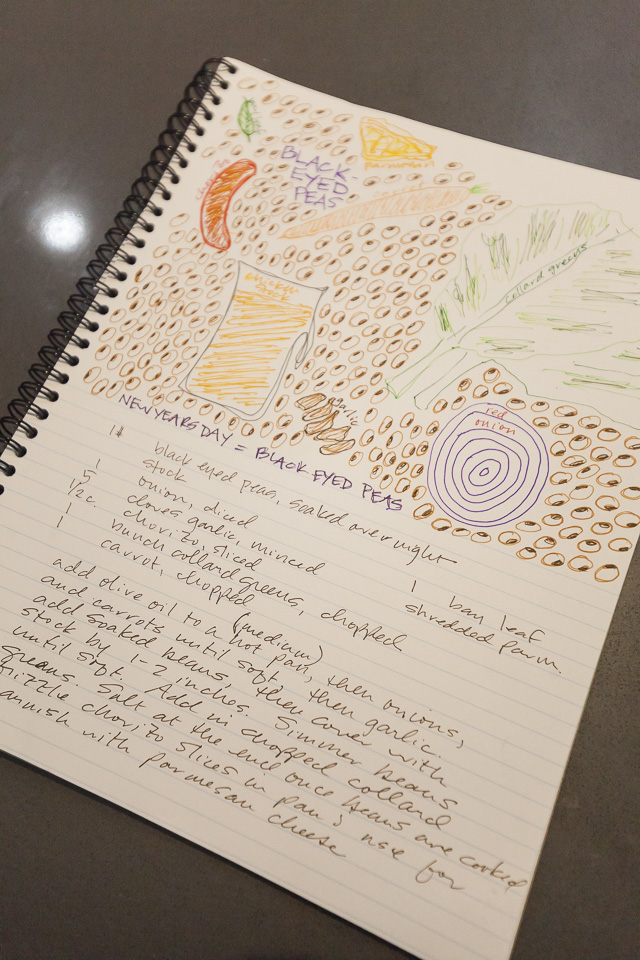 Martha's drawing cookbook. Photo by Scott David Gordon.
Martha's drawing cookbook. Photo by Scott David Gordon.
Any favorite cookbooks and/or blogs that you find yourself returning to time and time again?
The Art of Simple Food by Alice Waters is just so good. Every recipe in there is approachable. I love how she has variations on recipes. If you want to make a recipe a little bit differently, it’s easy. I really like Heidi Swanson’s 101 Cookbooks blog. It’s fun, vegetarian, bright, and inspired. The Jemima Code by Toni Tipton-Martin is amazing, too, and by a local.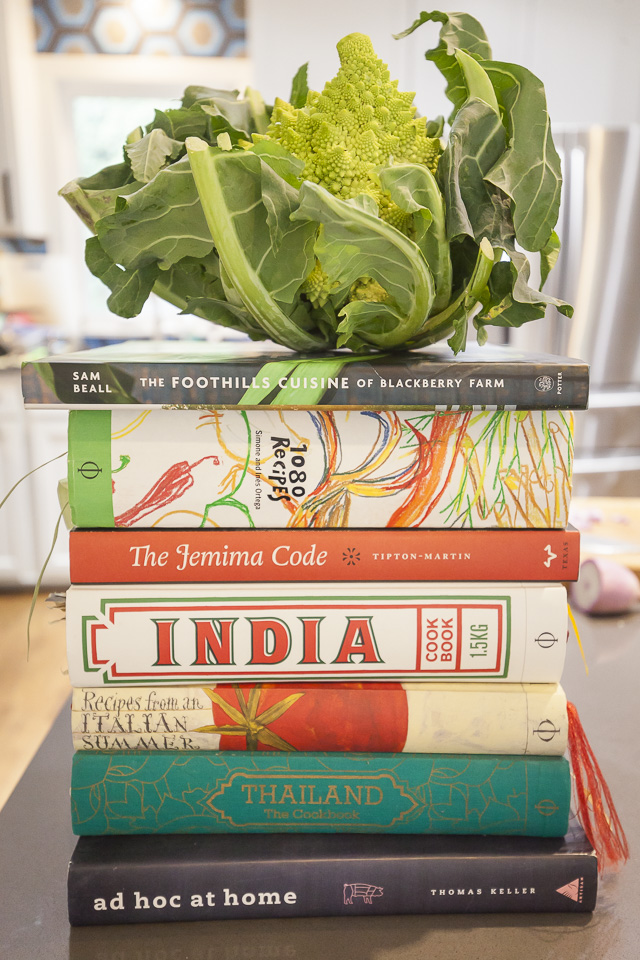 Some of Martha's favorite cookbooks. Photo by Scott David Gordon.
Some of Martha's favorite cookbooks. Photo by Scott David Gordon.
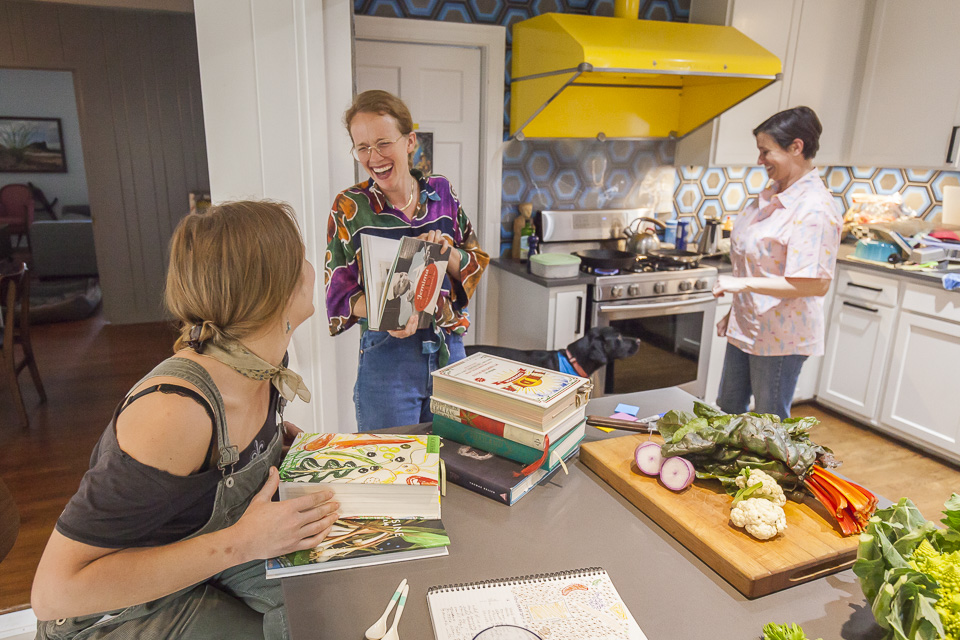 Perusing the cookbooks. Photo by Scott David Gordon.
Perusing the cookbooks. Photo by Scott David Gordon.
Any advice for new cooks or people who are trying to get into cooking?
My advice is to make it fit in your life. If you’re a social person, invite people over and do it together. Try stuff together, it’s a little less scary. Go to the farmer’s market because your food is going to taste better if you start with high-quality food. It’s also an inspirational experience being there. Make it fun, don’t take it so seriously that you alienate yourself from having a good experience. Whatever your version of fun is.If there is someone who’s a real tinkerer and they want to get things just right, bake because you have to get things just right. If you fly by the seat of your pants and just want to try new stuff, do it. Take a knife skills class because that’s definitely worth knowing, and get cooking! It really is a joyful thing to cook and feed people, so have fun.
If you were a veggie, what would you be and why?
Avocado. I know it doesn’t grow well here, but I really like it. They just make everything so good. Otherwise, I would say a watermelon radish because they just speak to me. A bookshelf in Pincoffs' home. Jo loves largescale objects and has them peppered all over the house. Photo by Scott David Gordon.
A bookshelf in Pincoffs' home. Jo loves largescale objects and has them peppered all over the house. Photo by Scott David Gordon.
A huge thanks to Martha and her wife, Jo! Thanks for hosting us, feeding us, and answering all of our questions. 'Til next time!
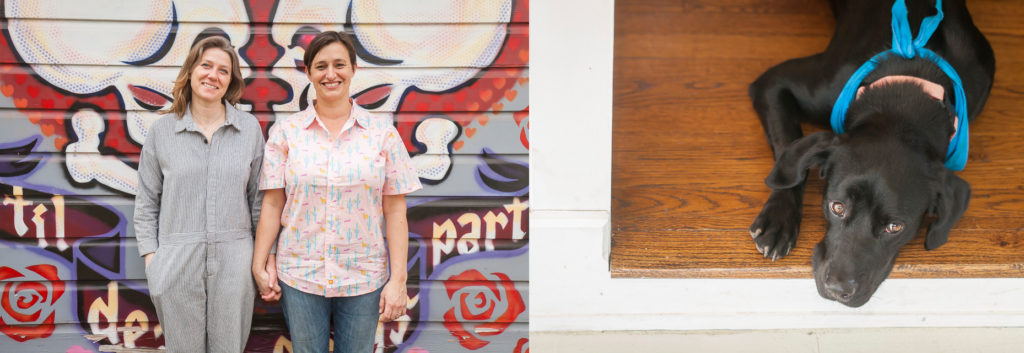 Photos by Scott David Gordon.
Photos by Scott David Gordon.WEEK 2 IN PHOTOS
01/11/19 — Heydon Hatcher
 Market scene. Photo by Scott David Gordon.
Market scene. Photo by Scott David Gordon.
We are beginning to get ready for our Spring Transplant Sale! The exact dates are TBD, but the sale usually lasts three weeks at the end of February through March. So, get your beds ready! We will have a huge selection.
Just in case you missed it, we are on week two of our New Year's CSA Promotion. Use code "veggieheaven" to get your first box free when you sign up! We are elated to have so many new Austinites joining our CSA program.
Crowd favorite Romanesco has made its way into some CSA boxes this week and is headed to market this weekend! See you there.
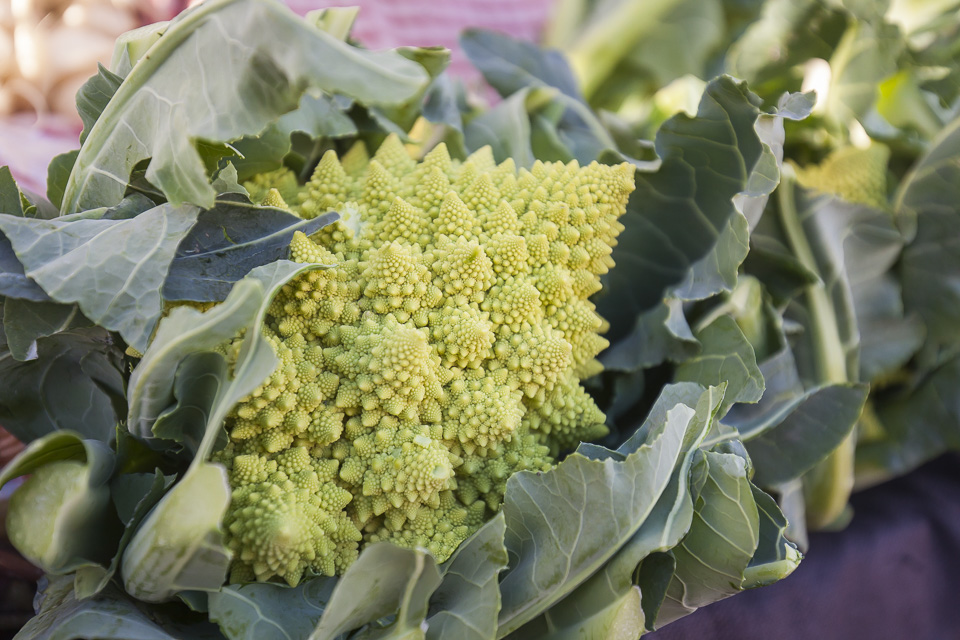 ROMANESCO! Photo by Scott David Gordon.
ROMANESCO! Photo by Scott David Gordon.
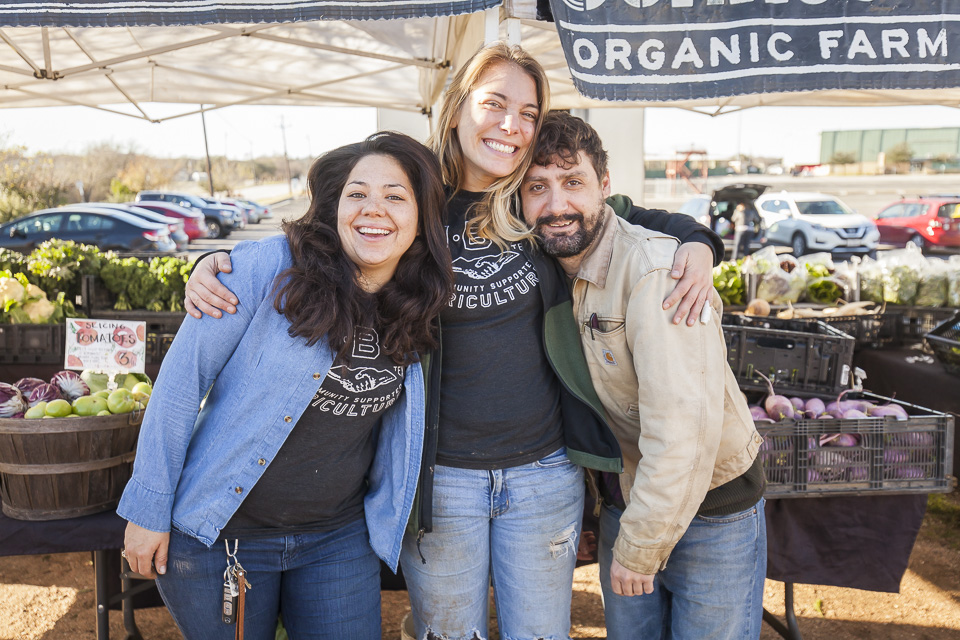 Market folk. Photo by Scott David Gordon.
Market folk. Photo by Scott David Gordon.
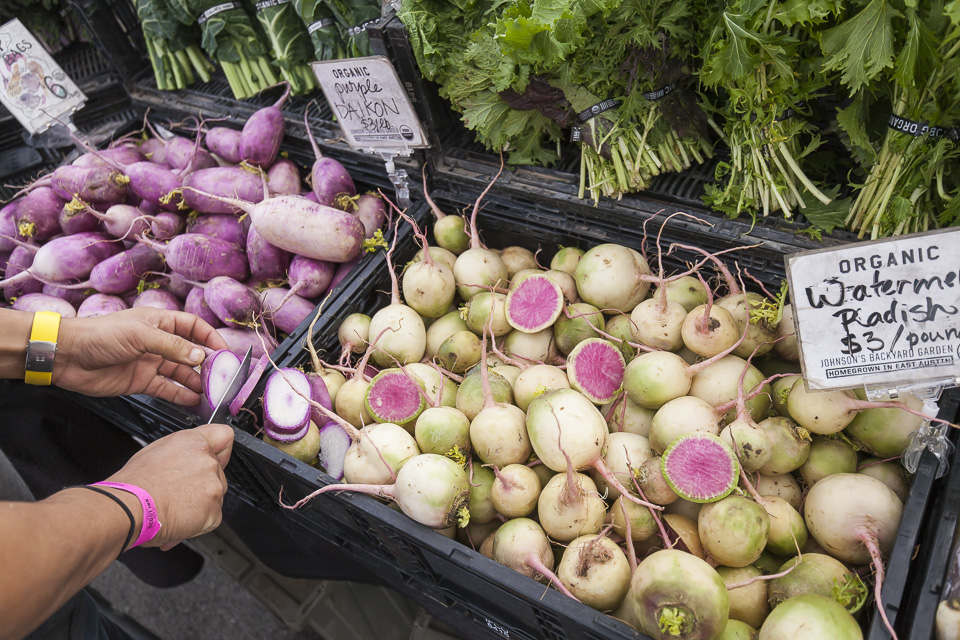 Stunning radishes and daikons. Photo by Scott David Gordon.
Stunning radishes and daikons. Photo by Scott David Gordon.
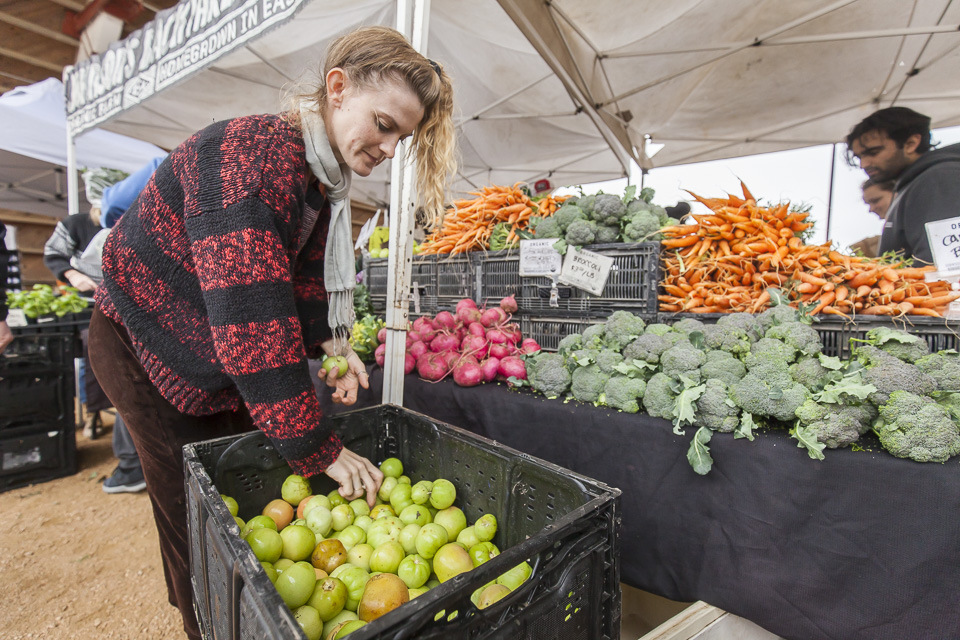 'Maters at market. Photo by Scott David Gordon.
'Maters at market. Photo by Scott David Gordon.
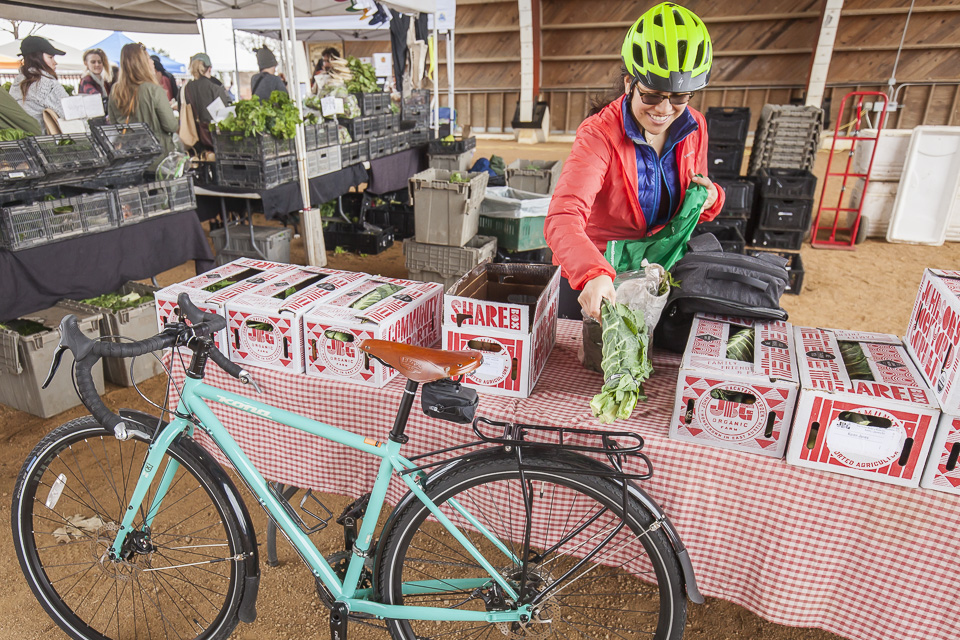 Picking up her CSA at market. Photo by Scott David Gordon.
Picking up her CSA at market. Photo by Scott David Gordon.
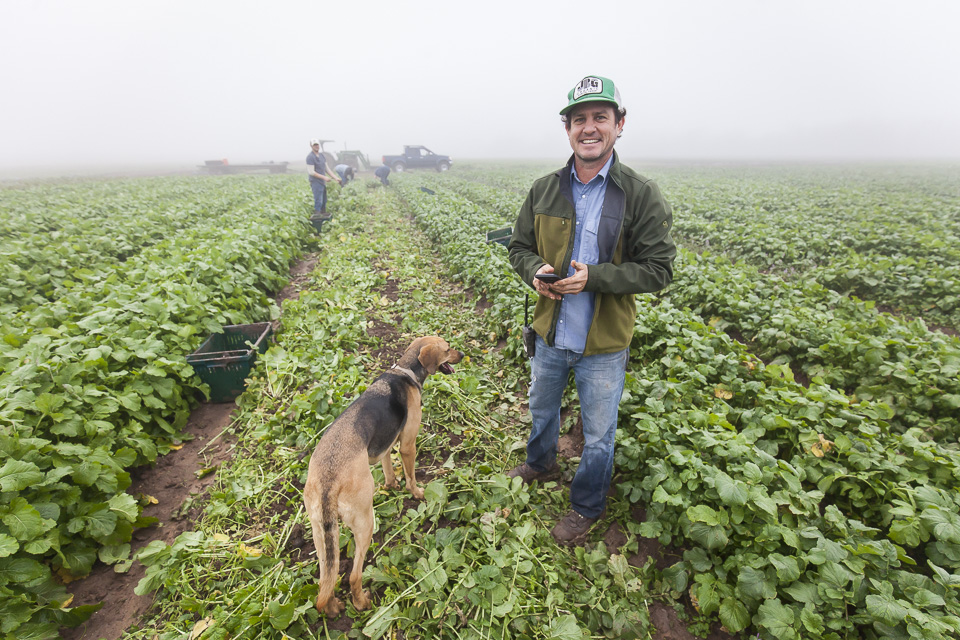 Brenton and Roxy. Photo by Scott David Gordon.
Brenton and Roxy. Photo by Scott David Gordon.
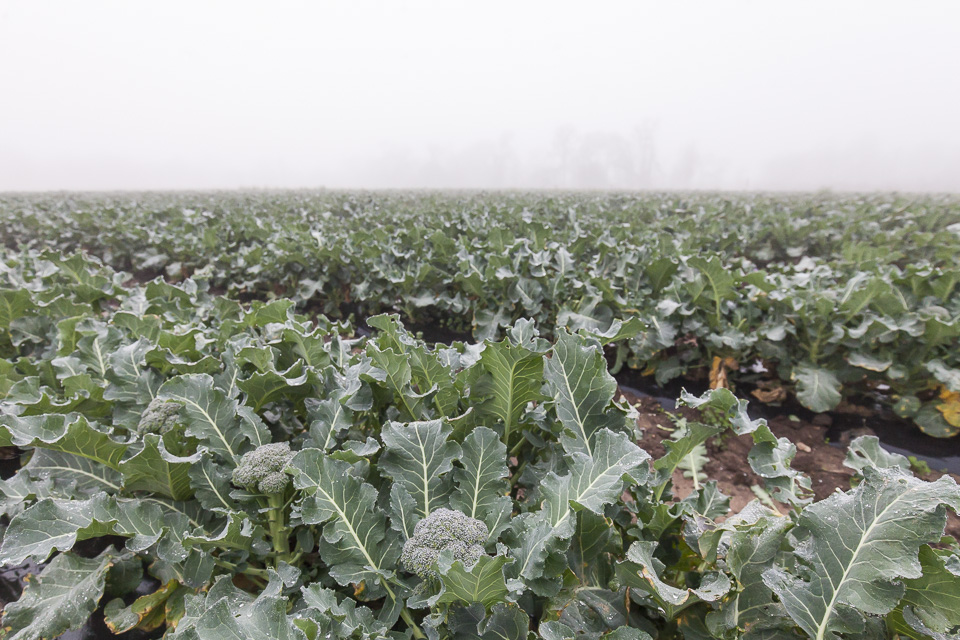 Foggy broccoli fields. Photo by Scott David Gordon.
Foggy broccoli fields. Photo by Scott David Gordon.
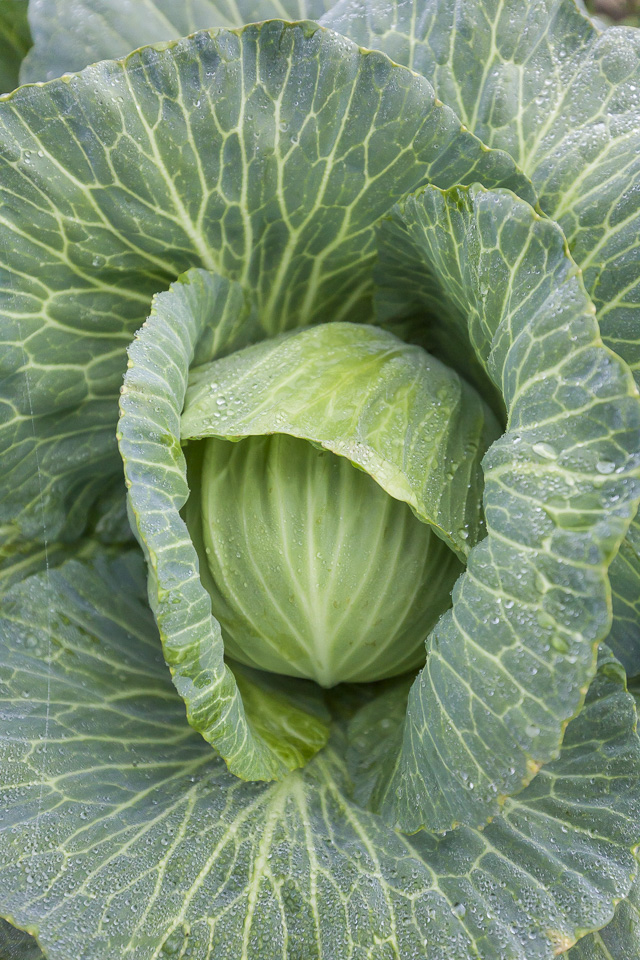 Cabbage beauty. Photo by Scott David Gordon.
Cabbage beauty. Photo by Scott David Gordon.
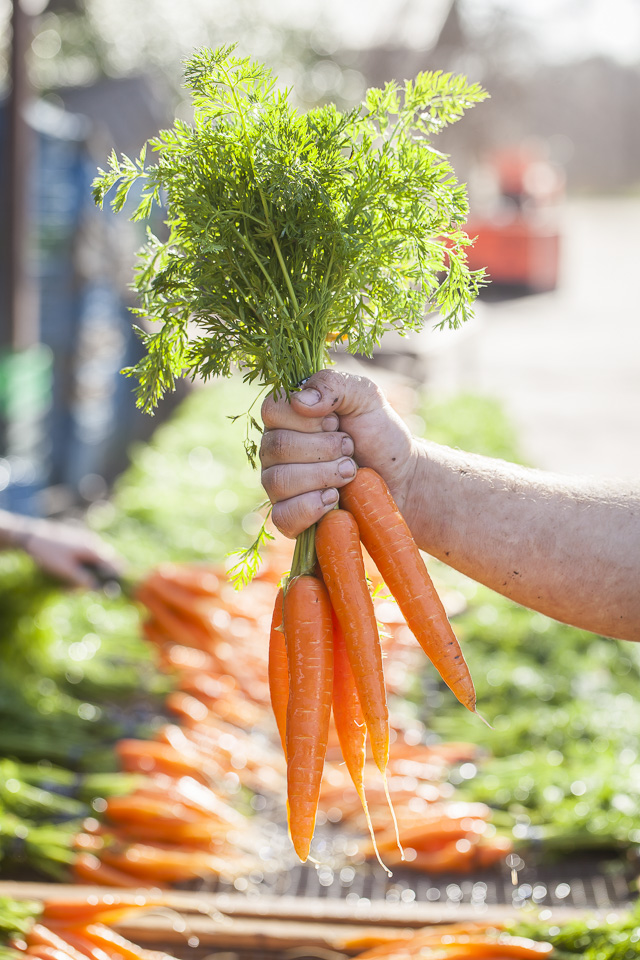 Carrots freshly soaked and in the sun. Photo by Scott David Gordon.
Carrots freshly soaked and in the sun. Photo by Scott David Gordon.
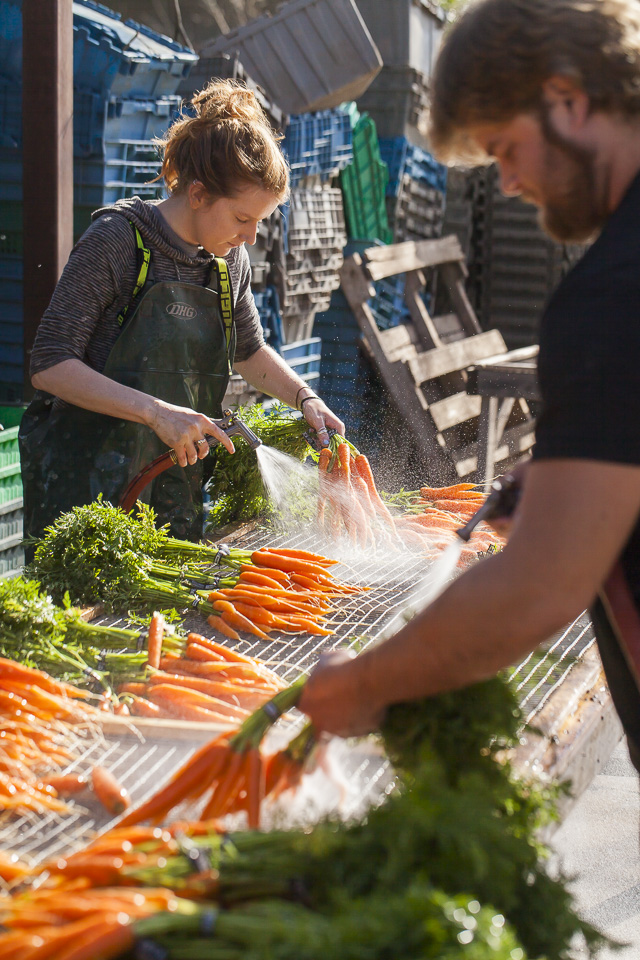 Rinsing off the carrots. Photo by Scott David Gordon.
Rinsing off the carrots. Photo by Scott David Gordon.





 0 ITEMS IN CART
0 ITEMS IN CART 

